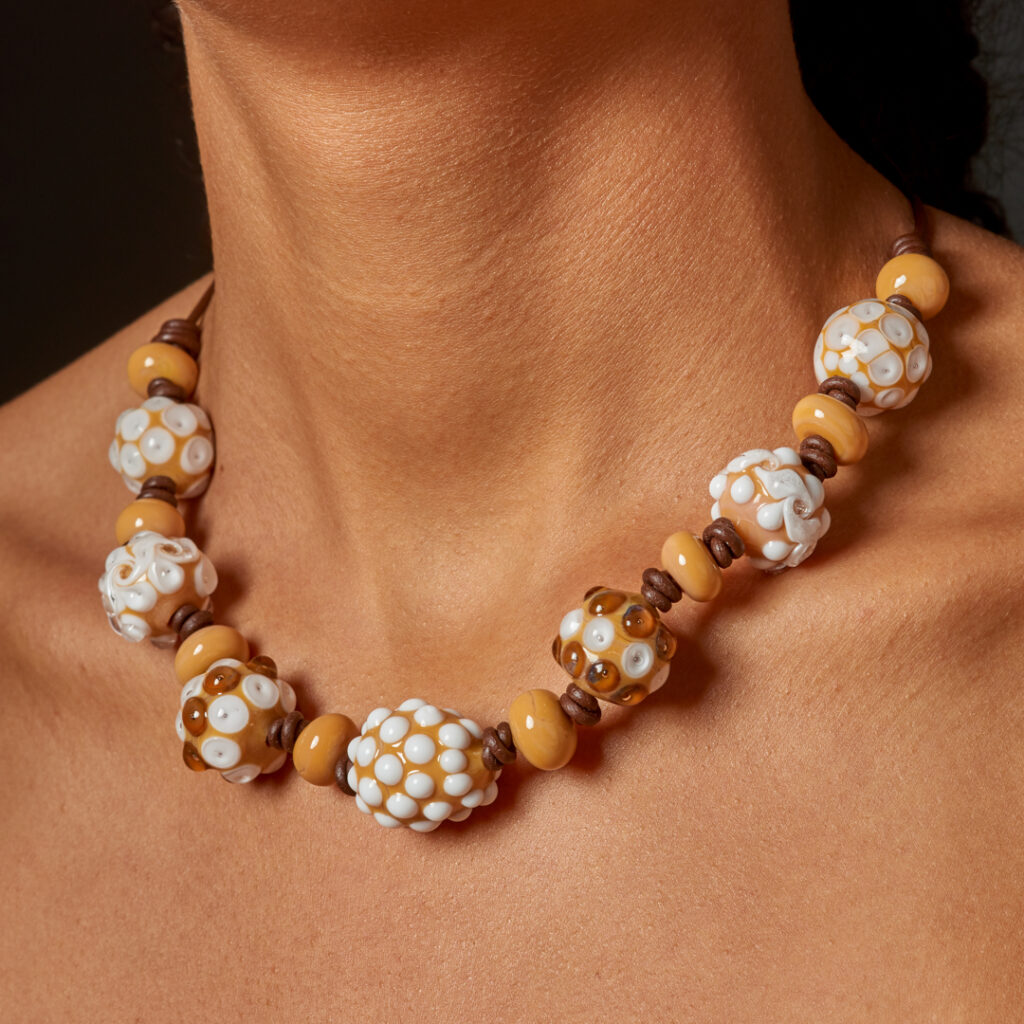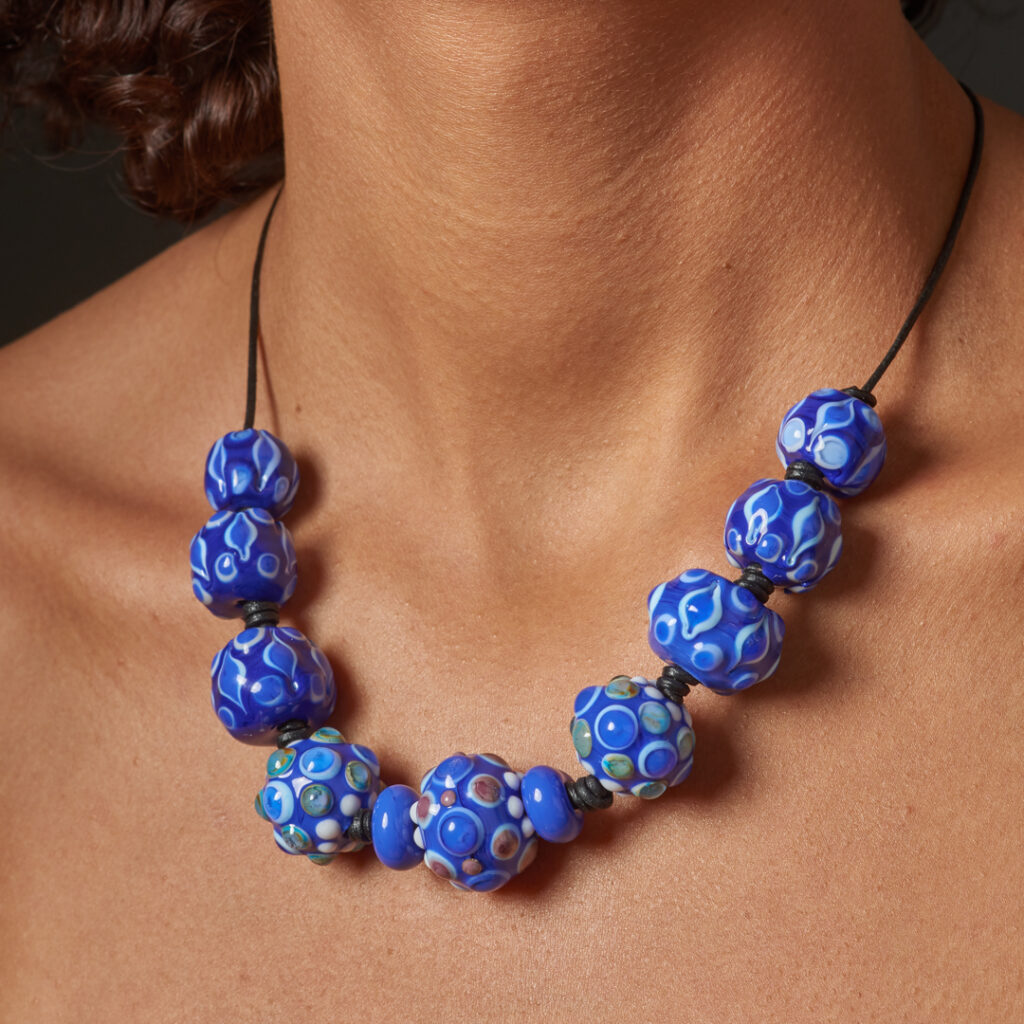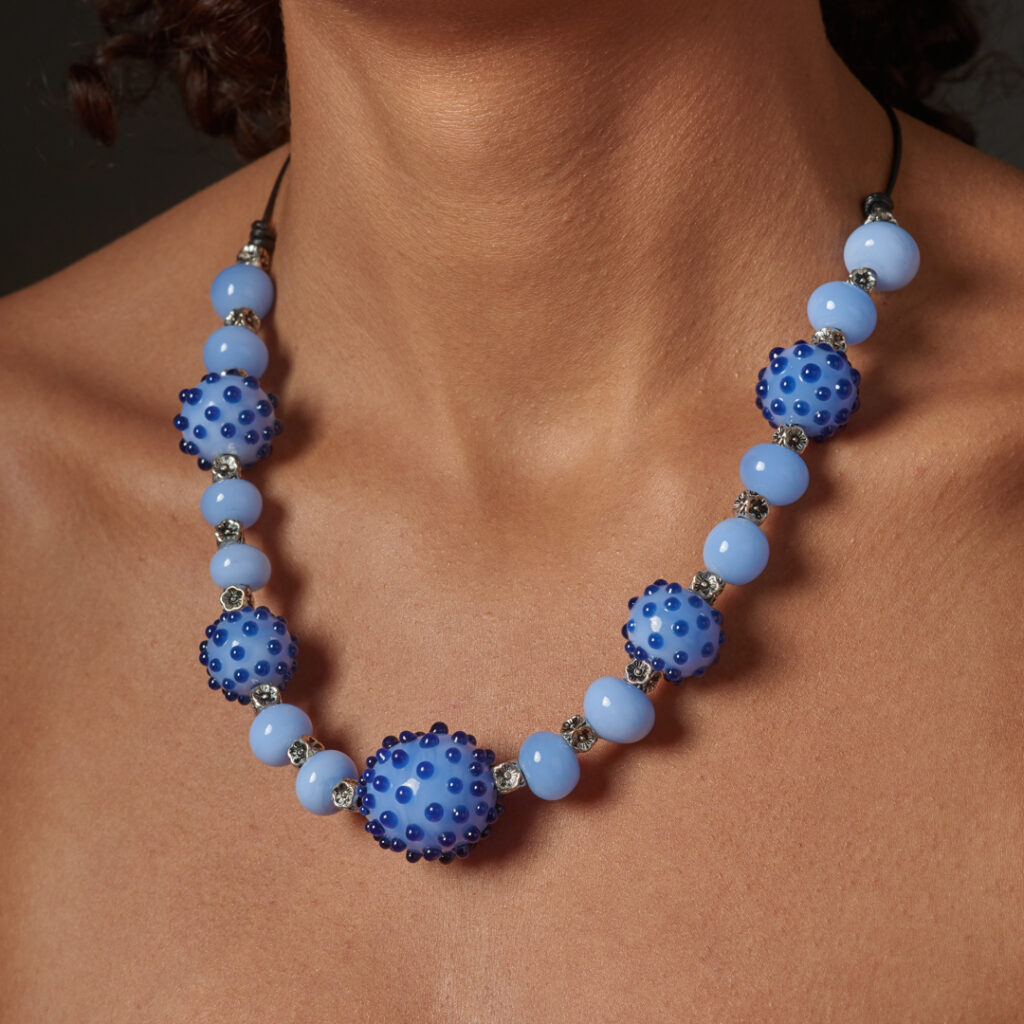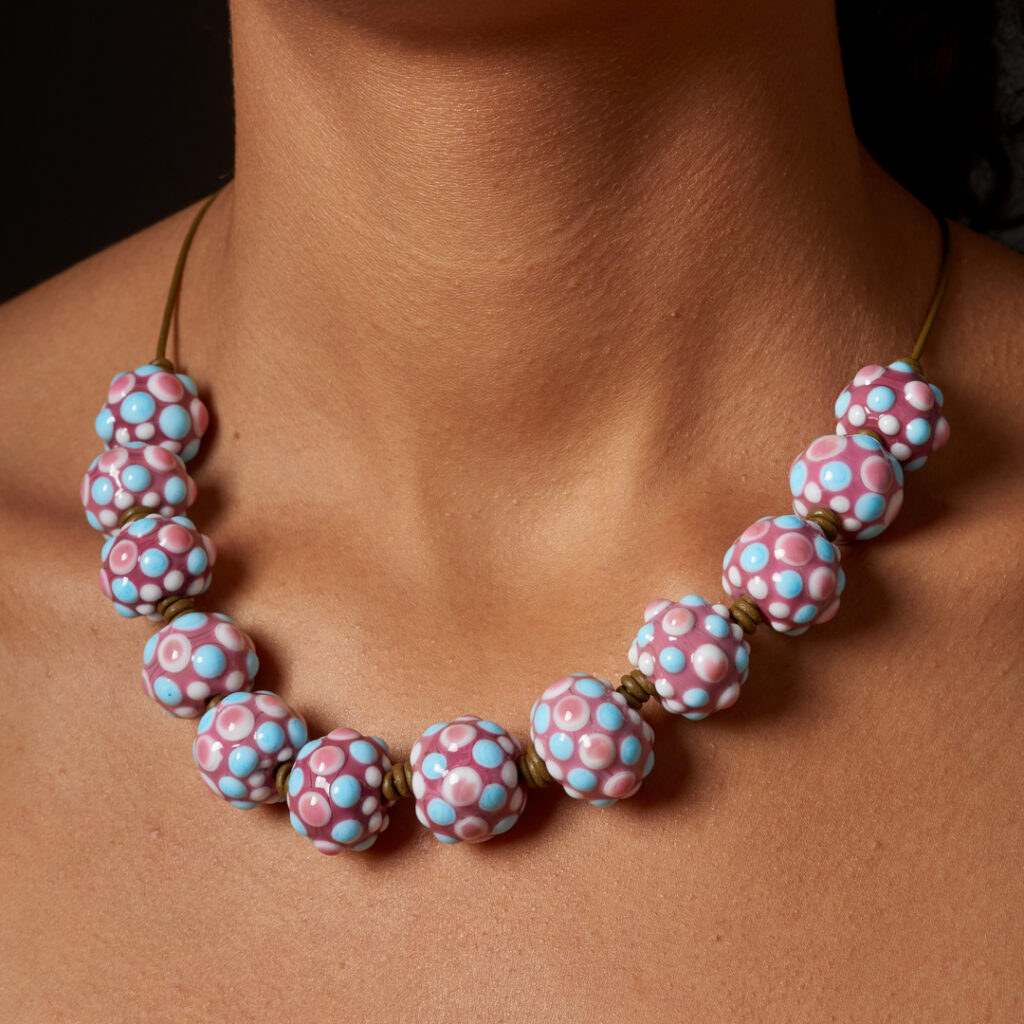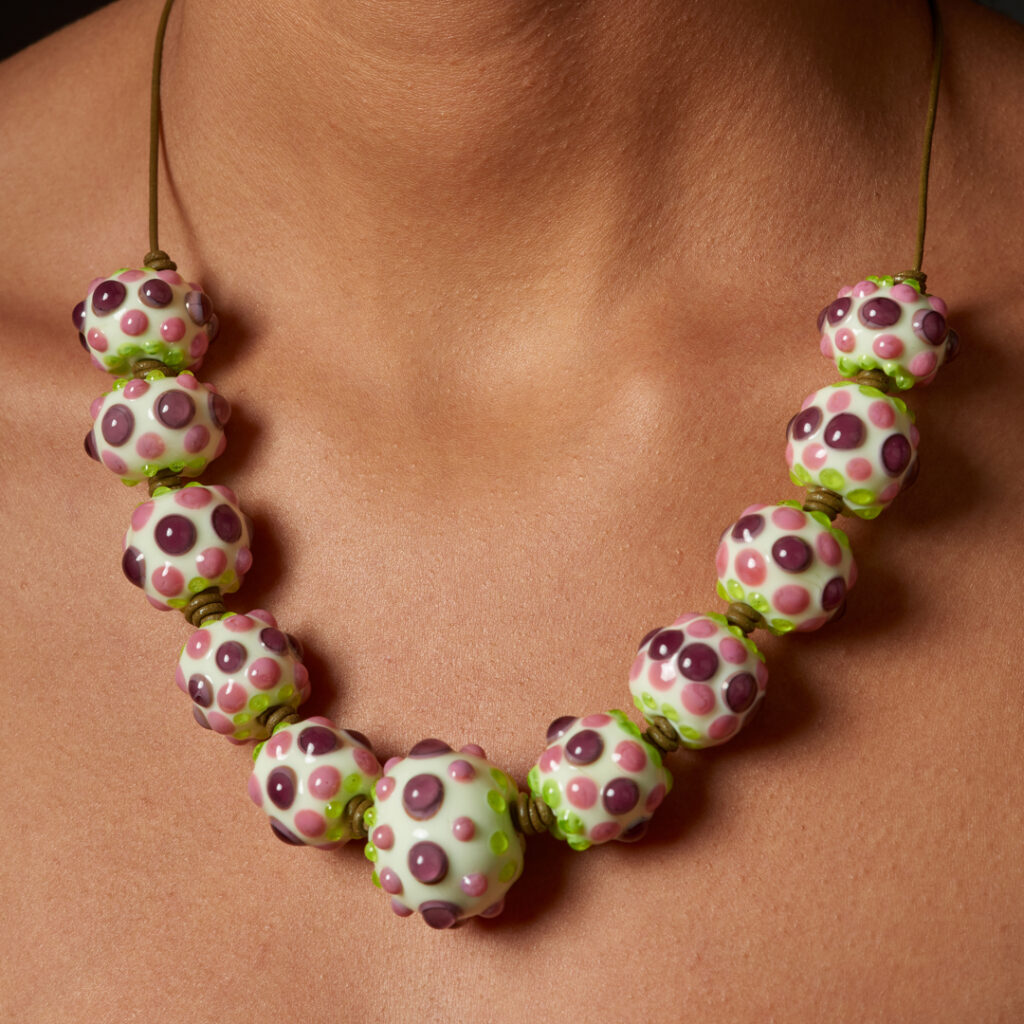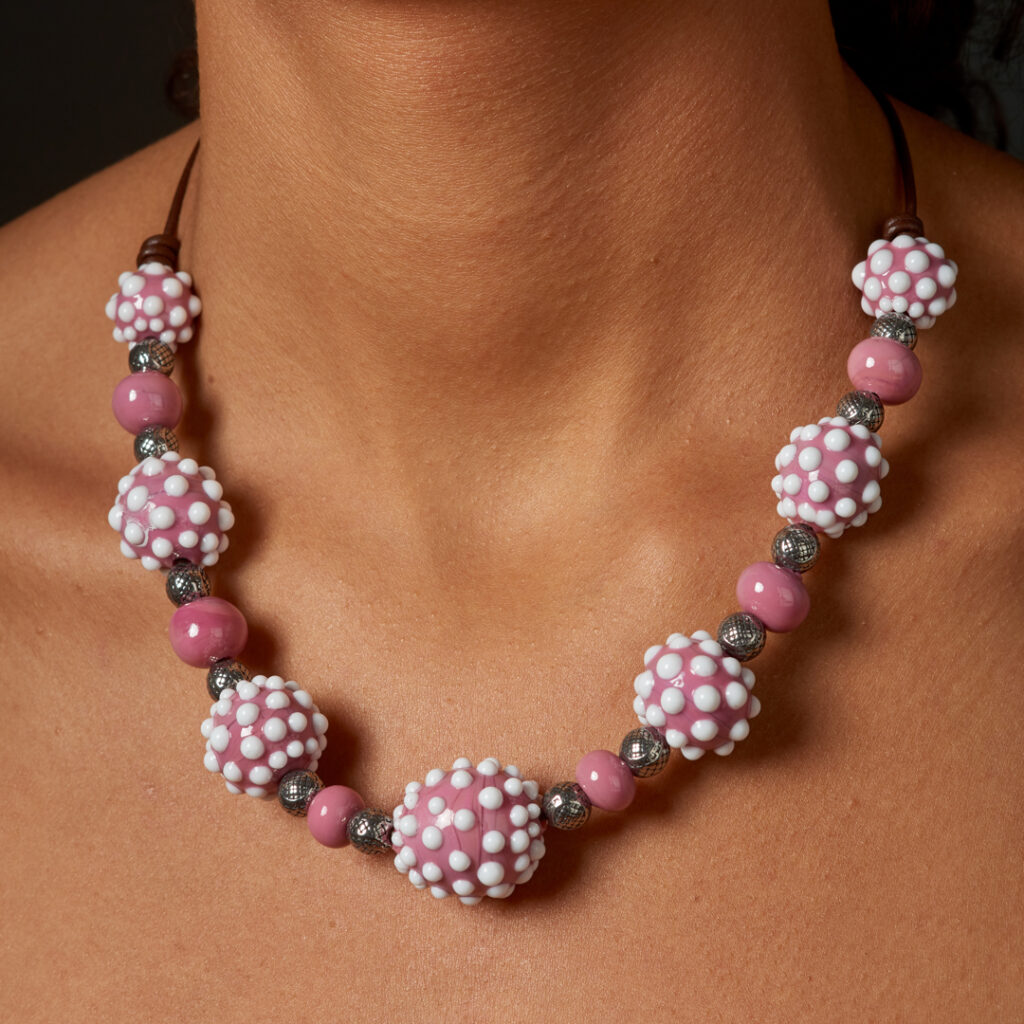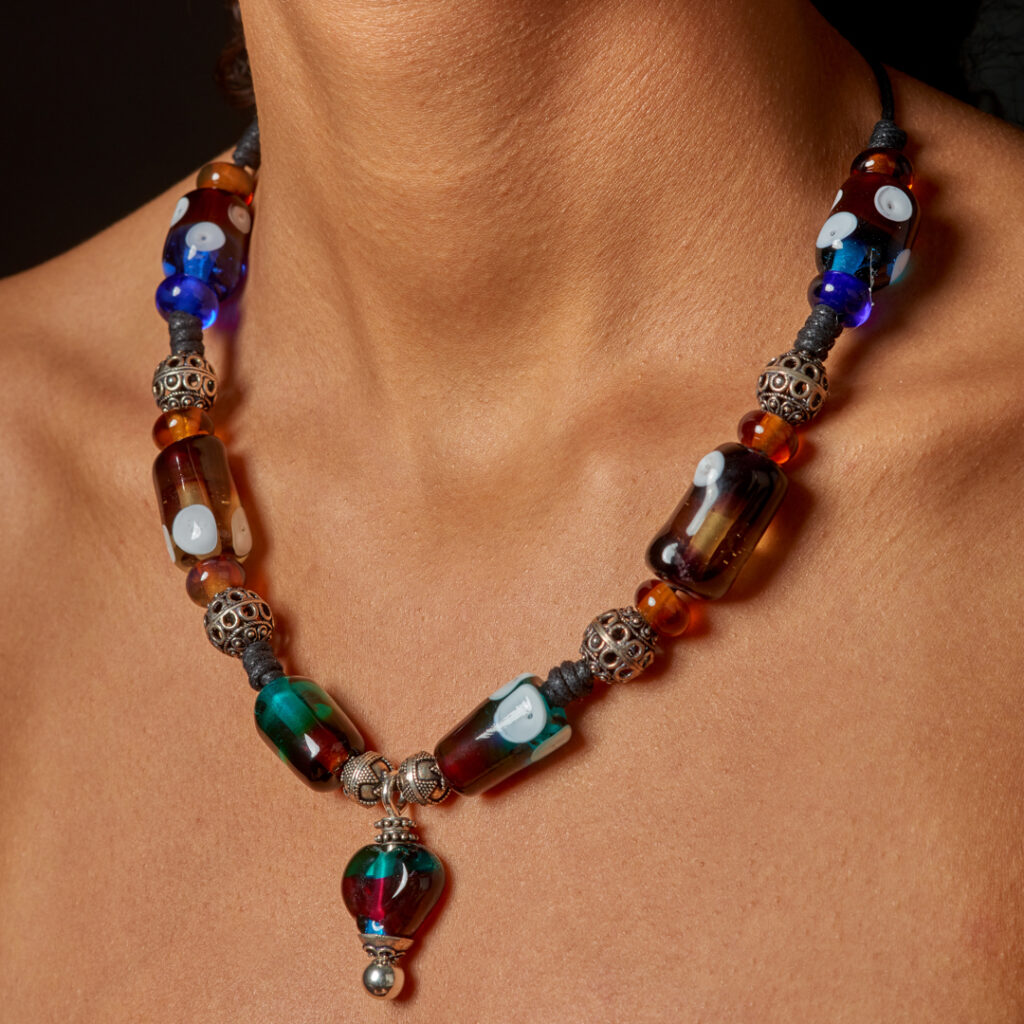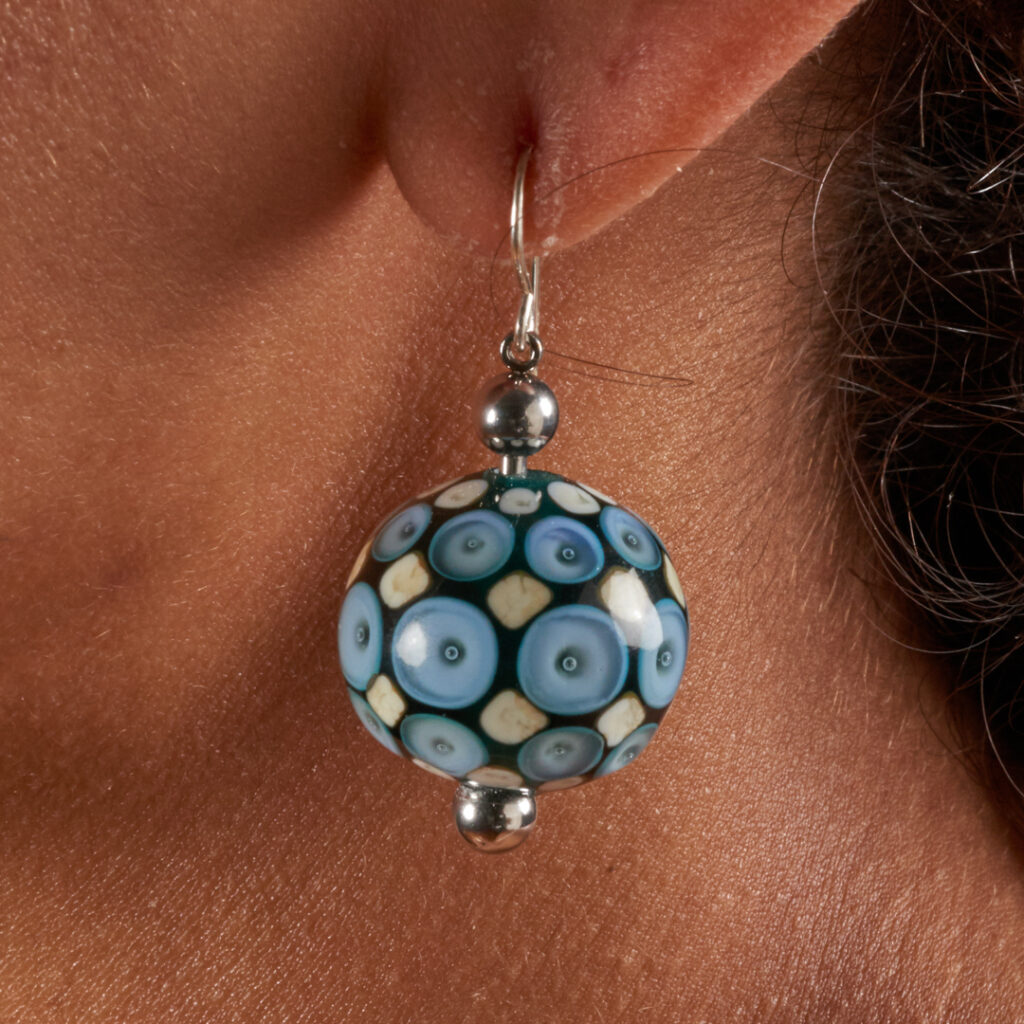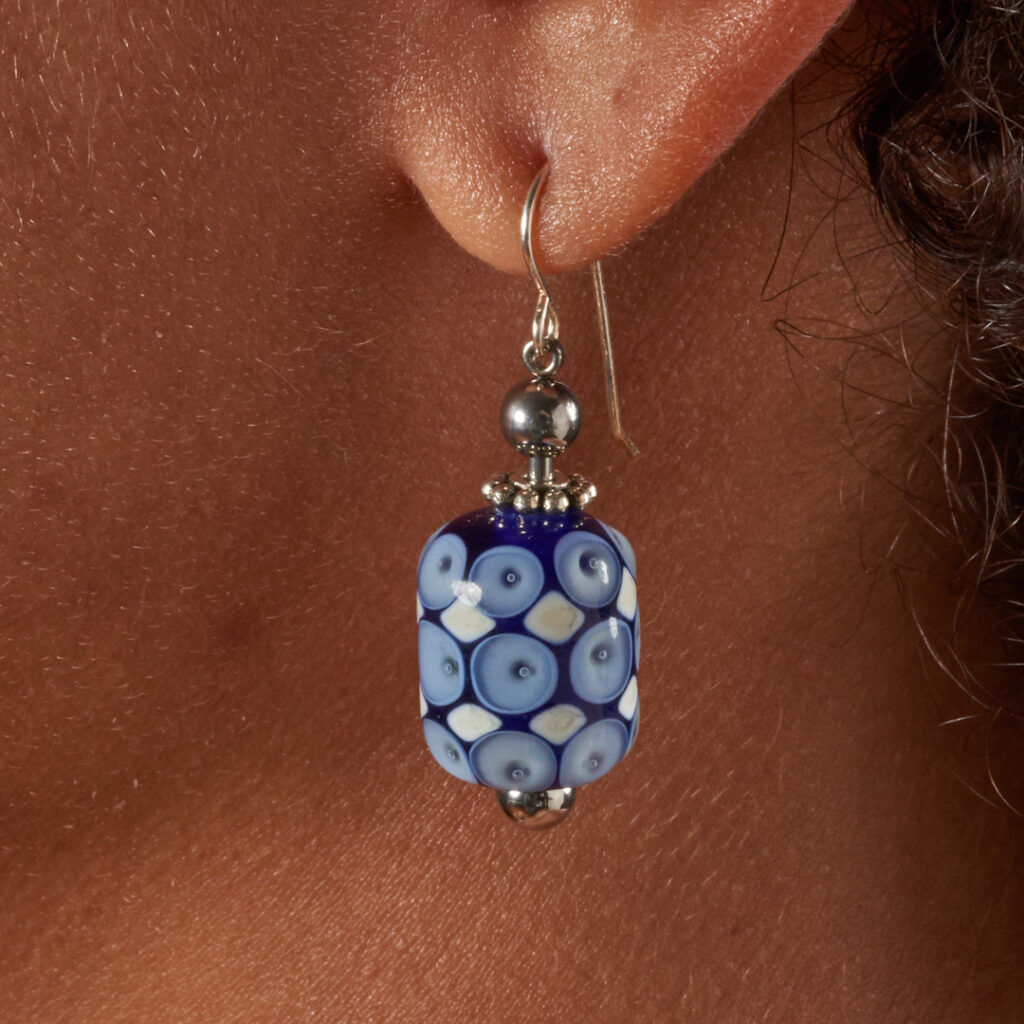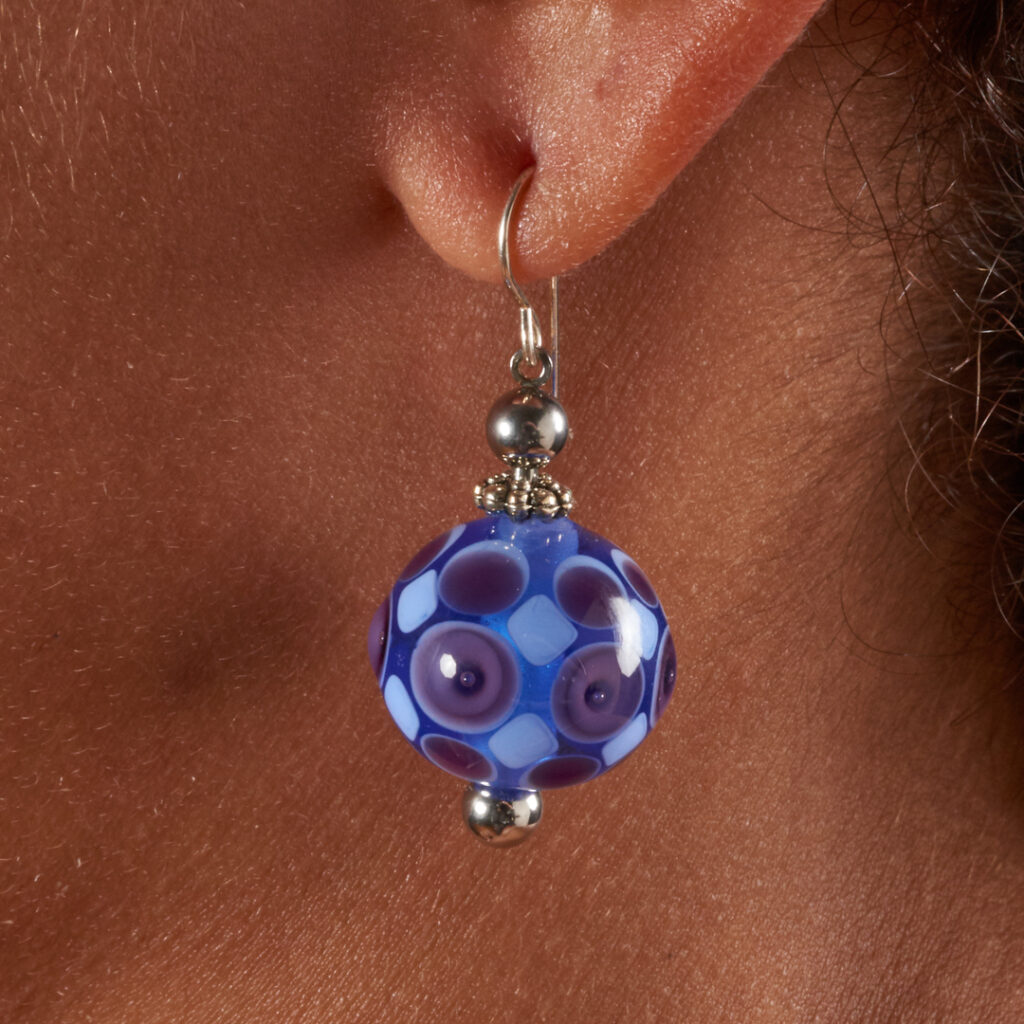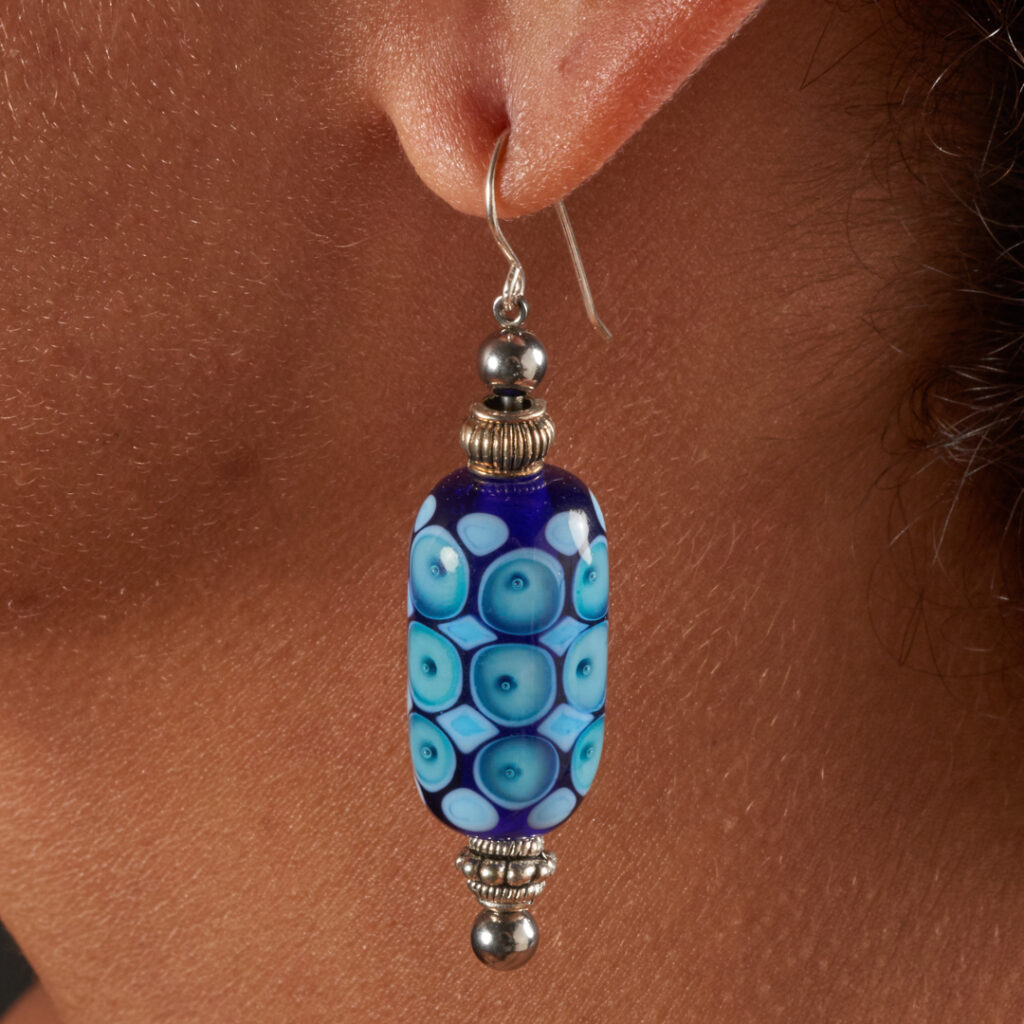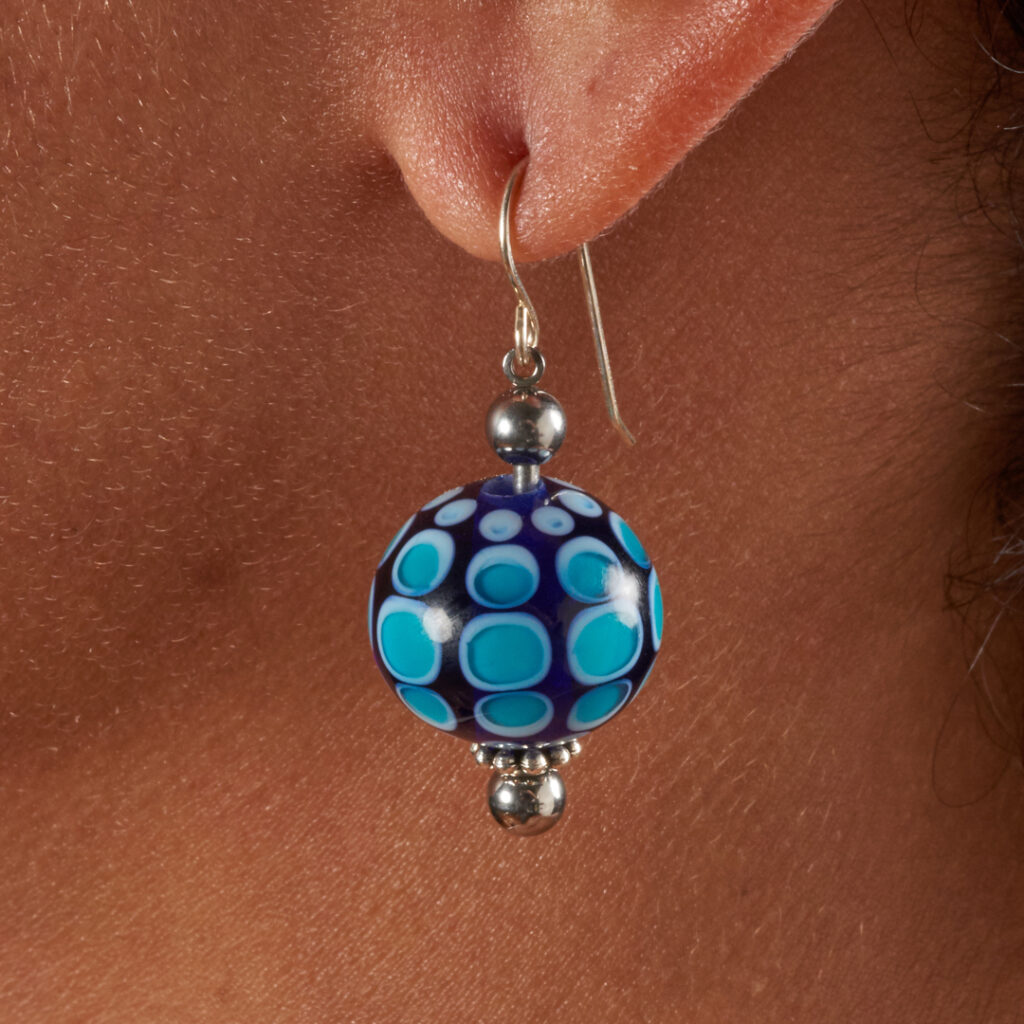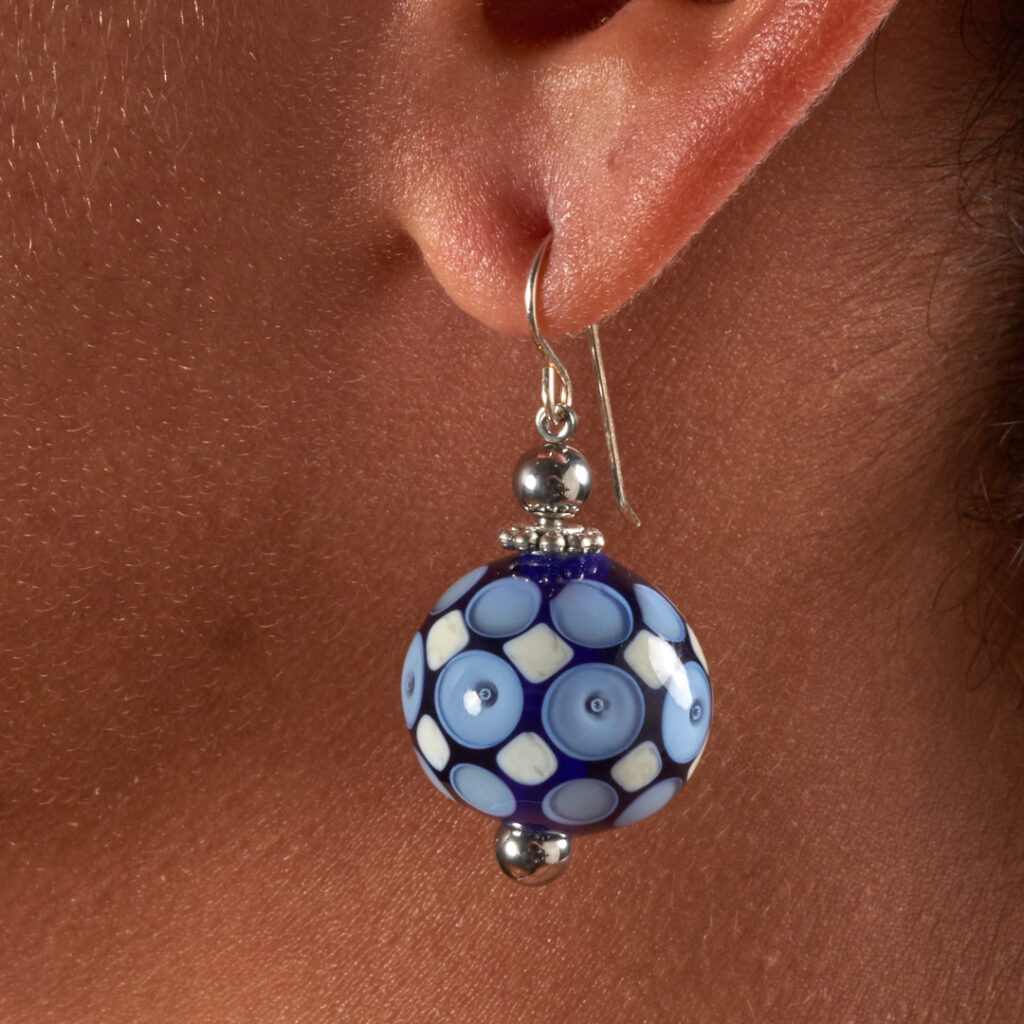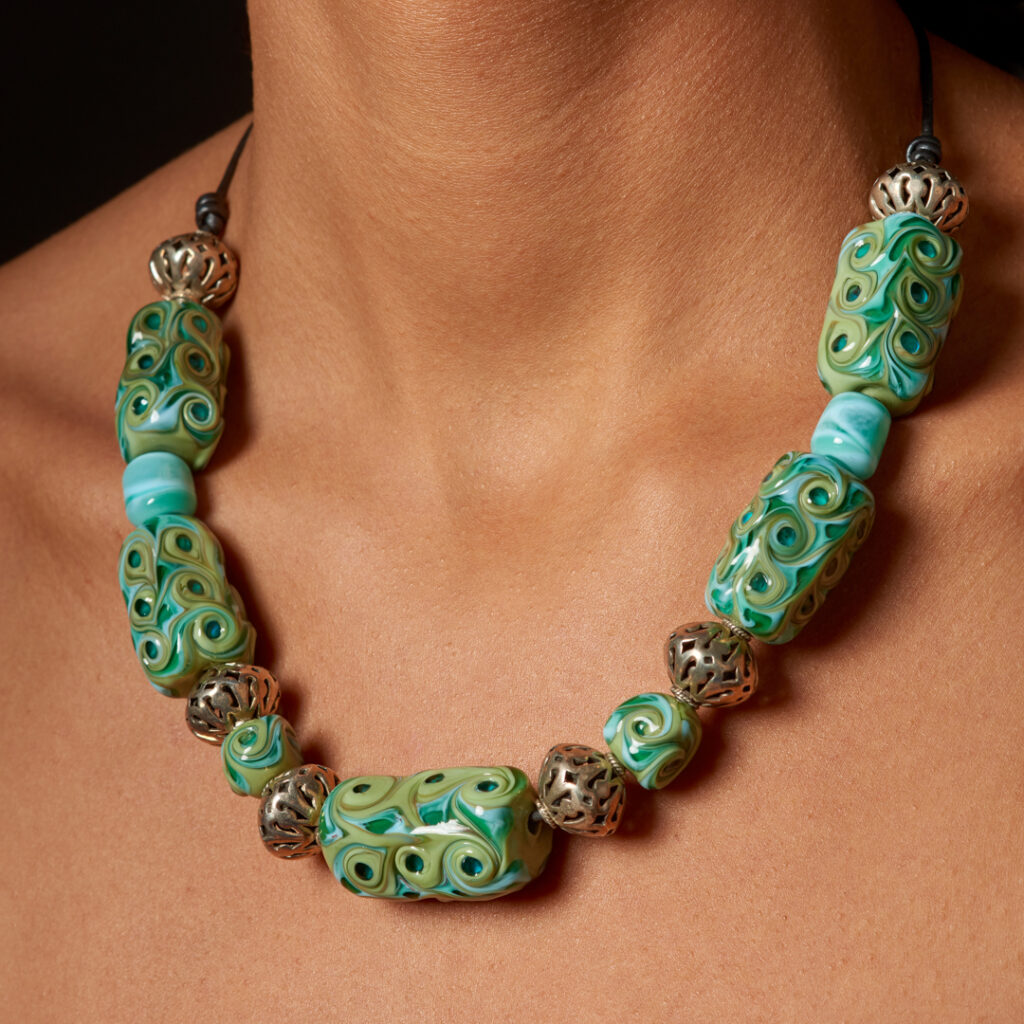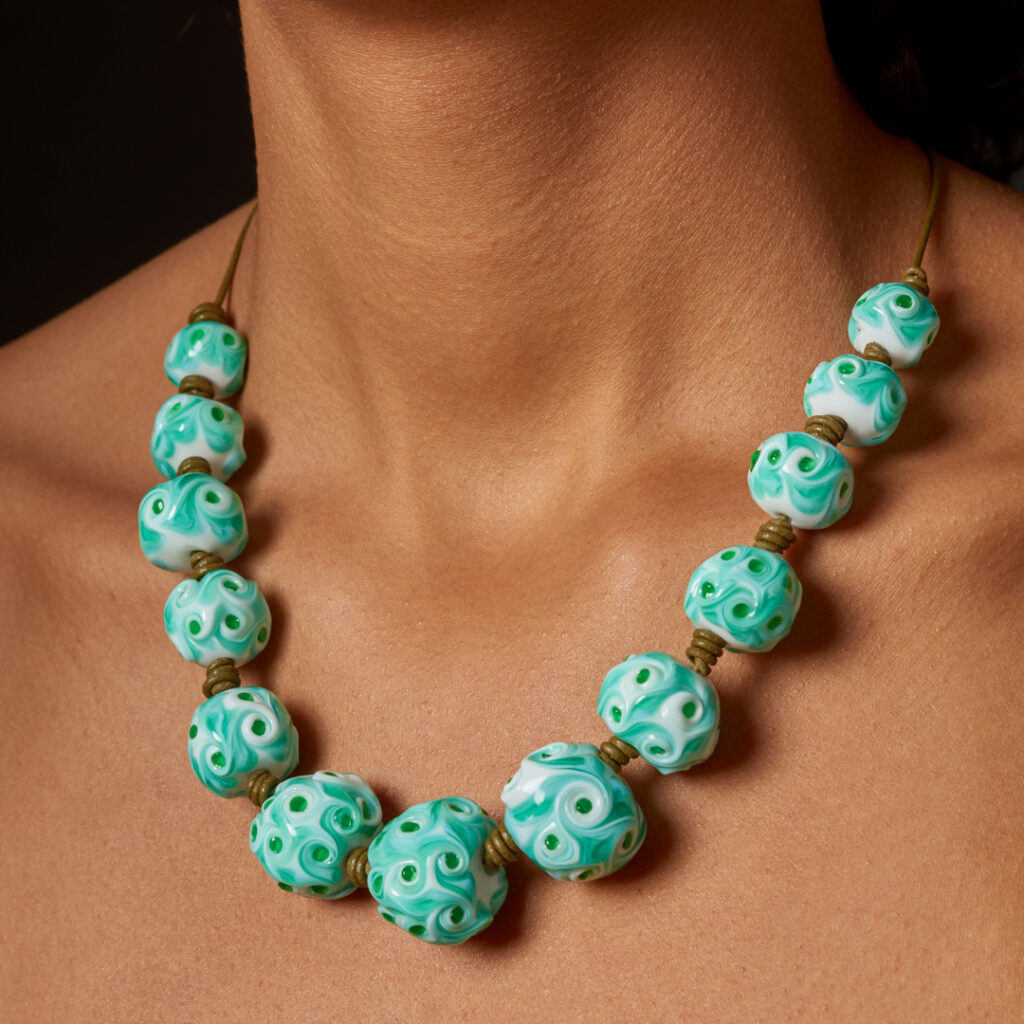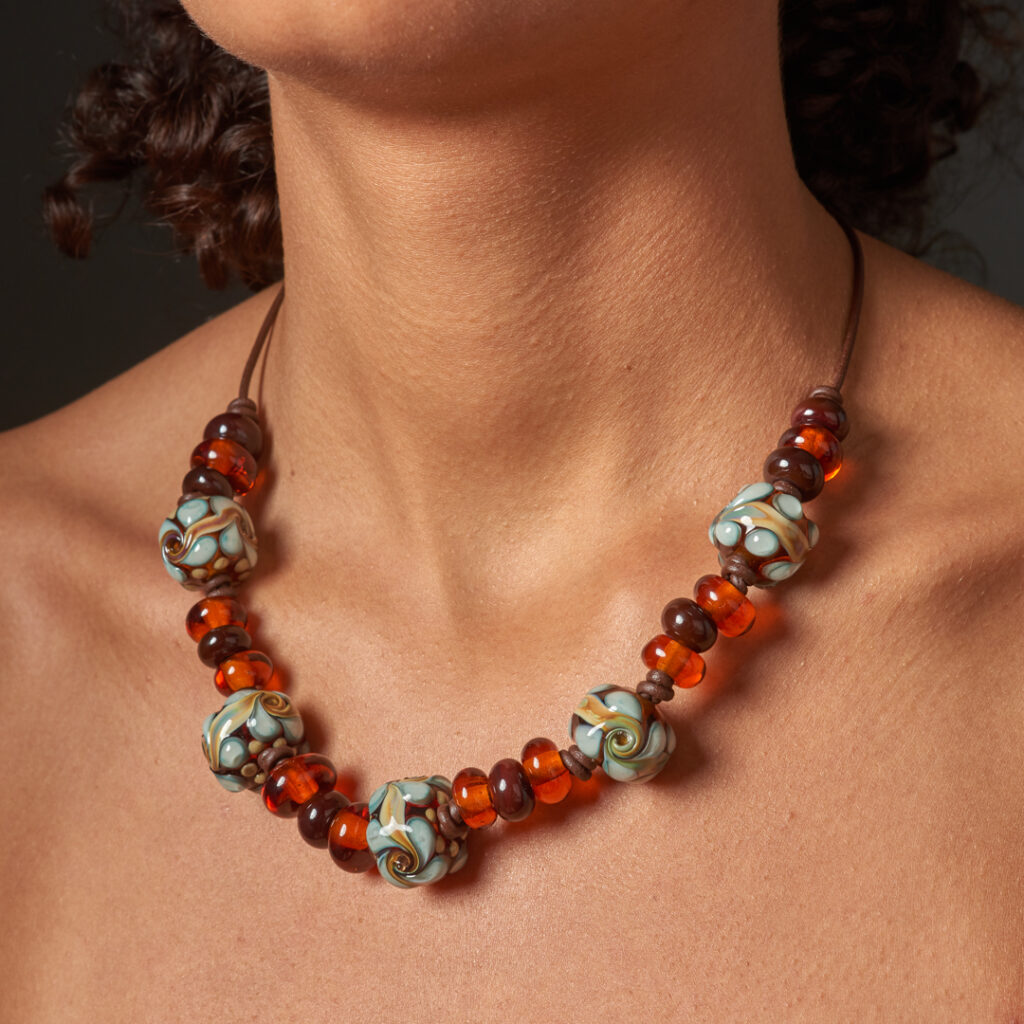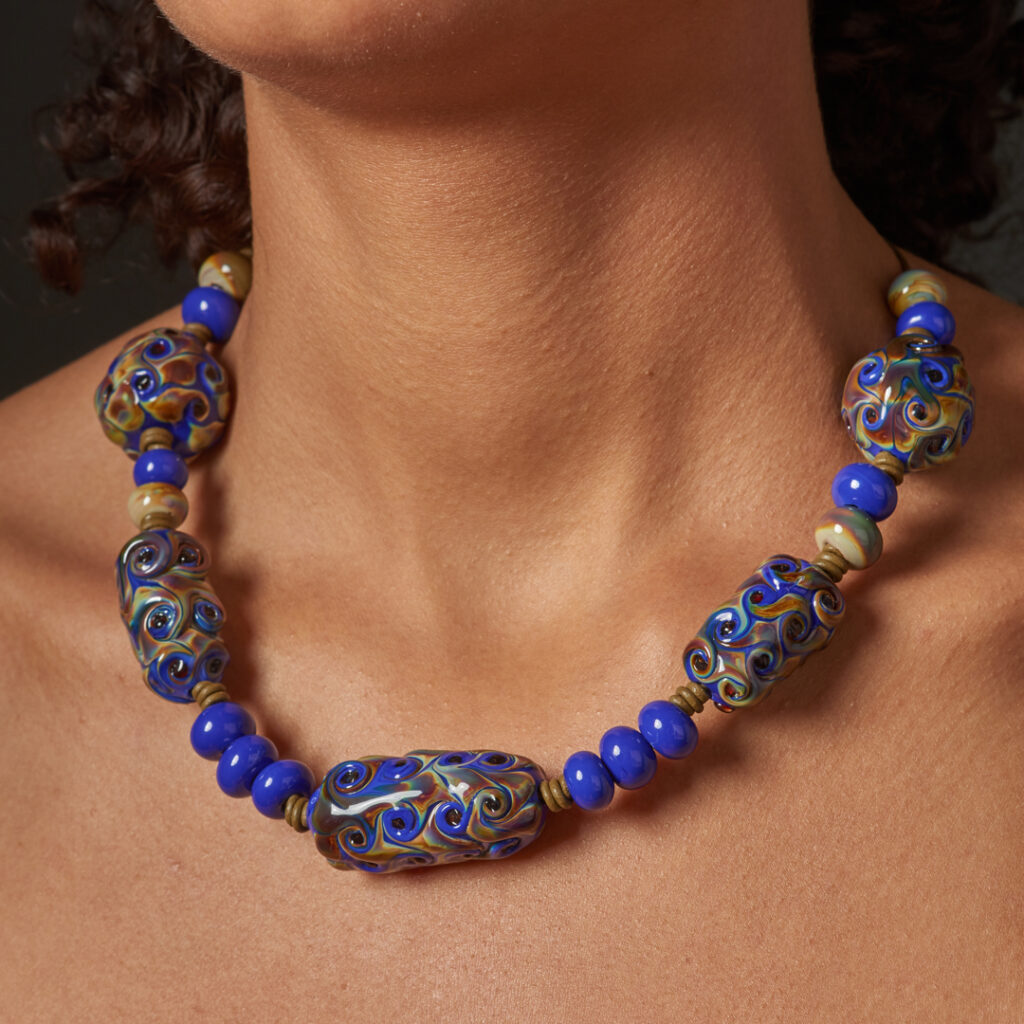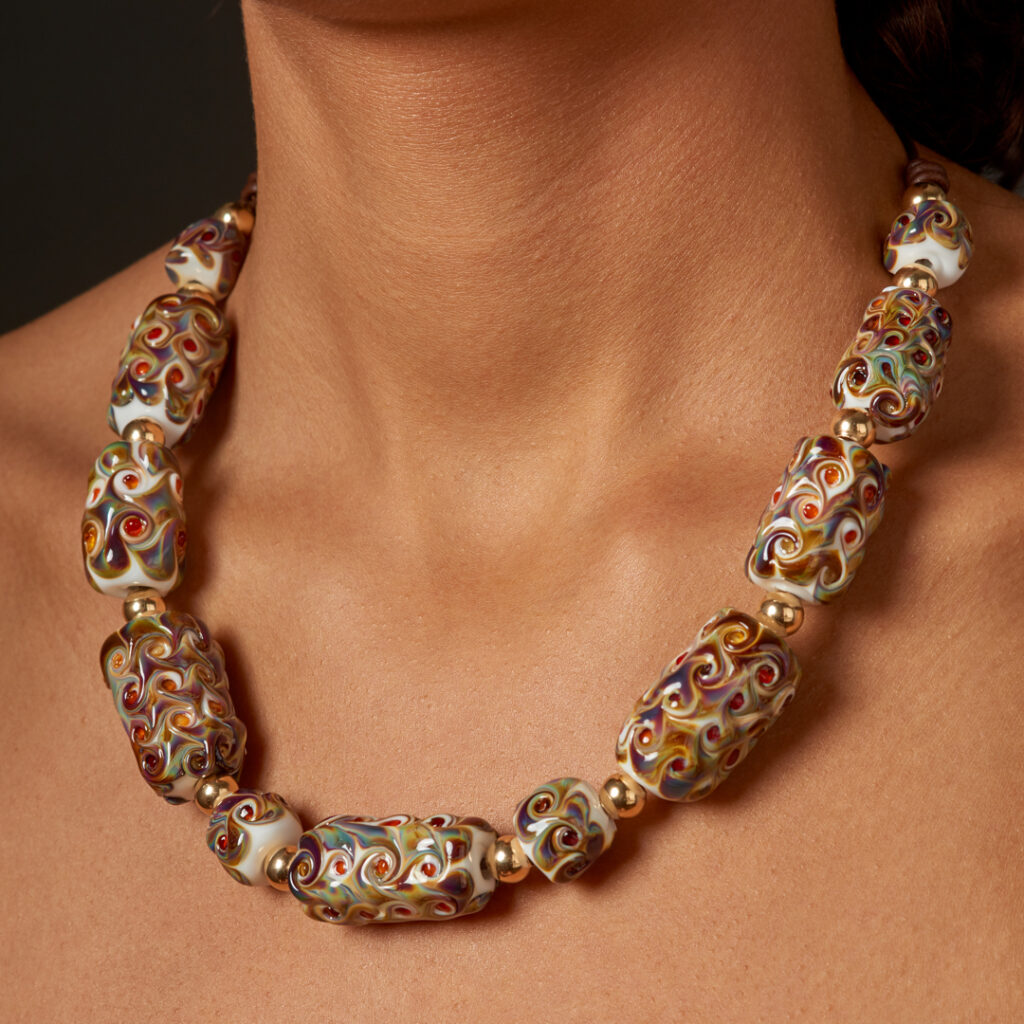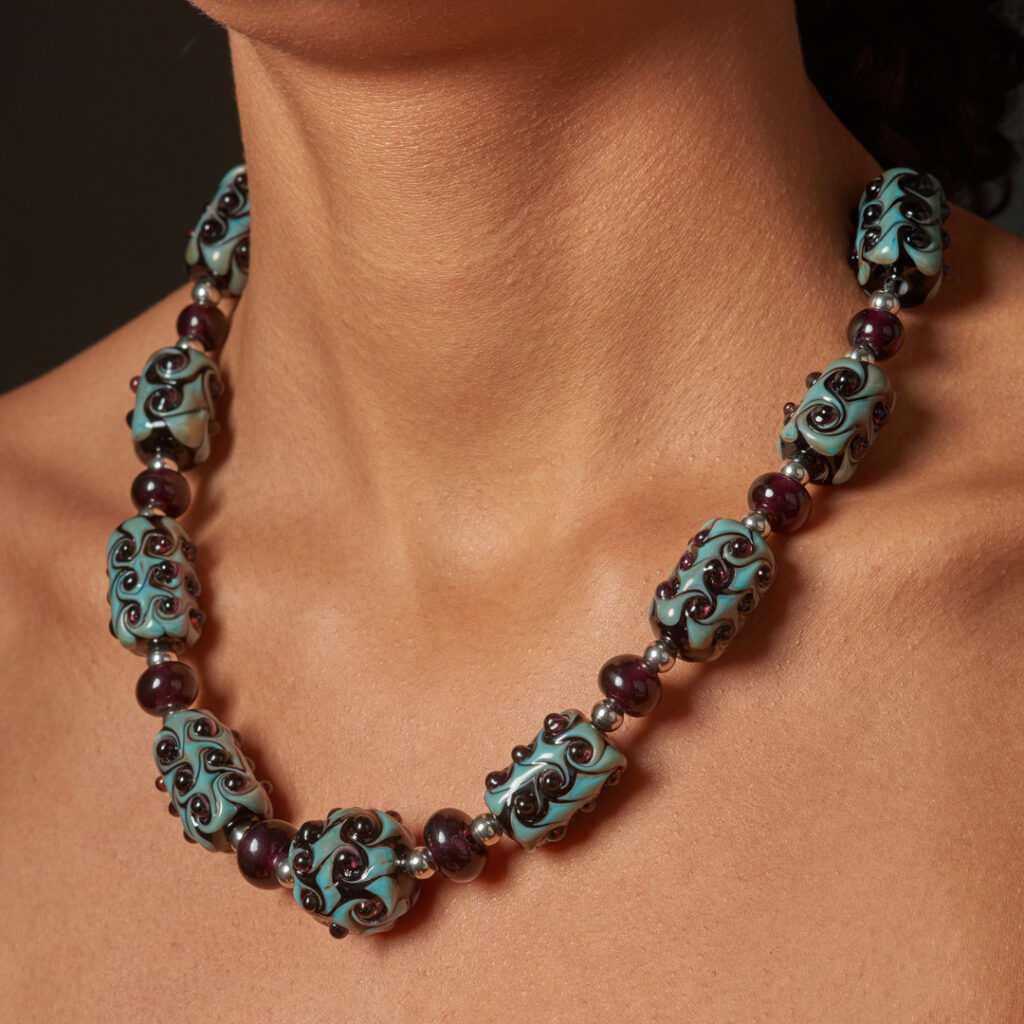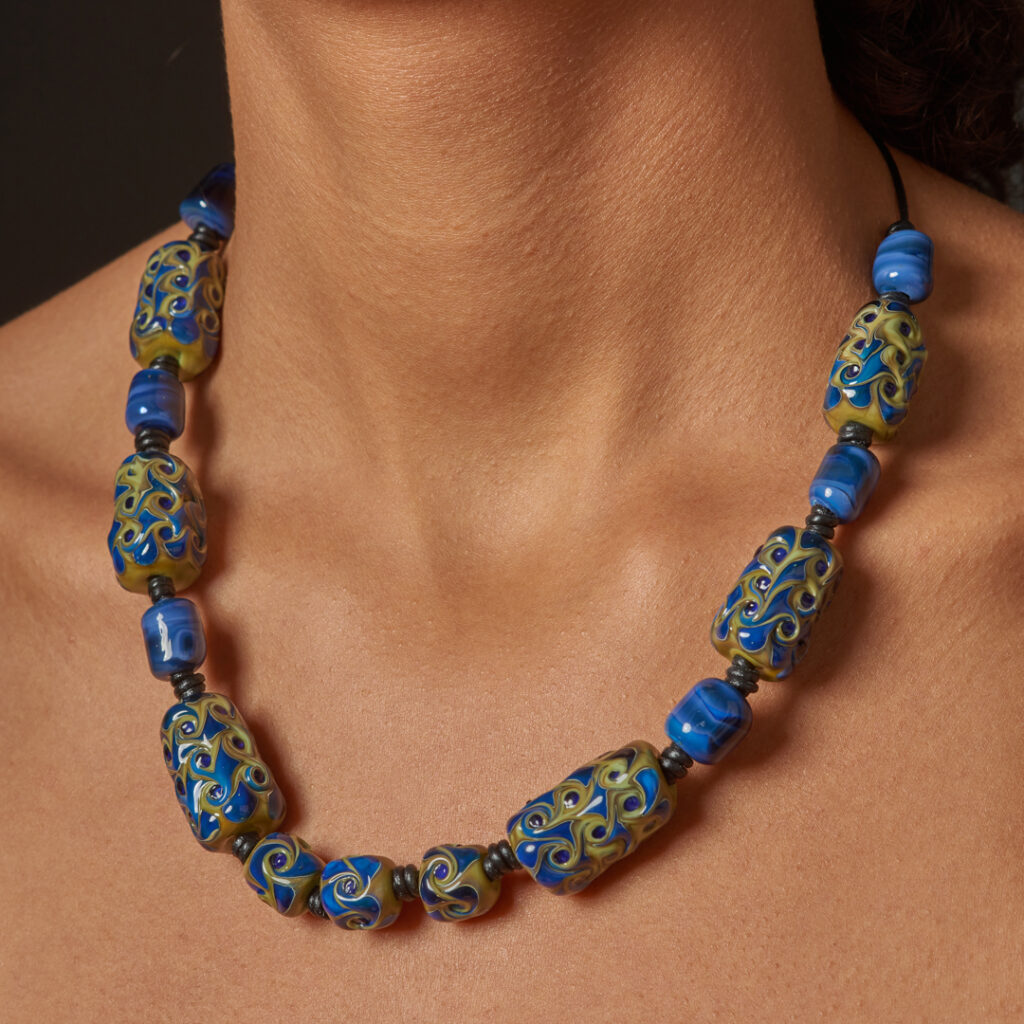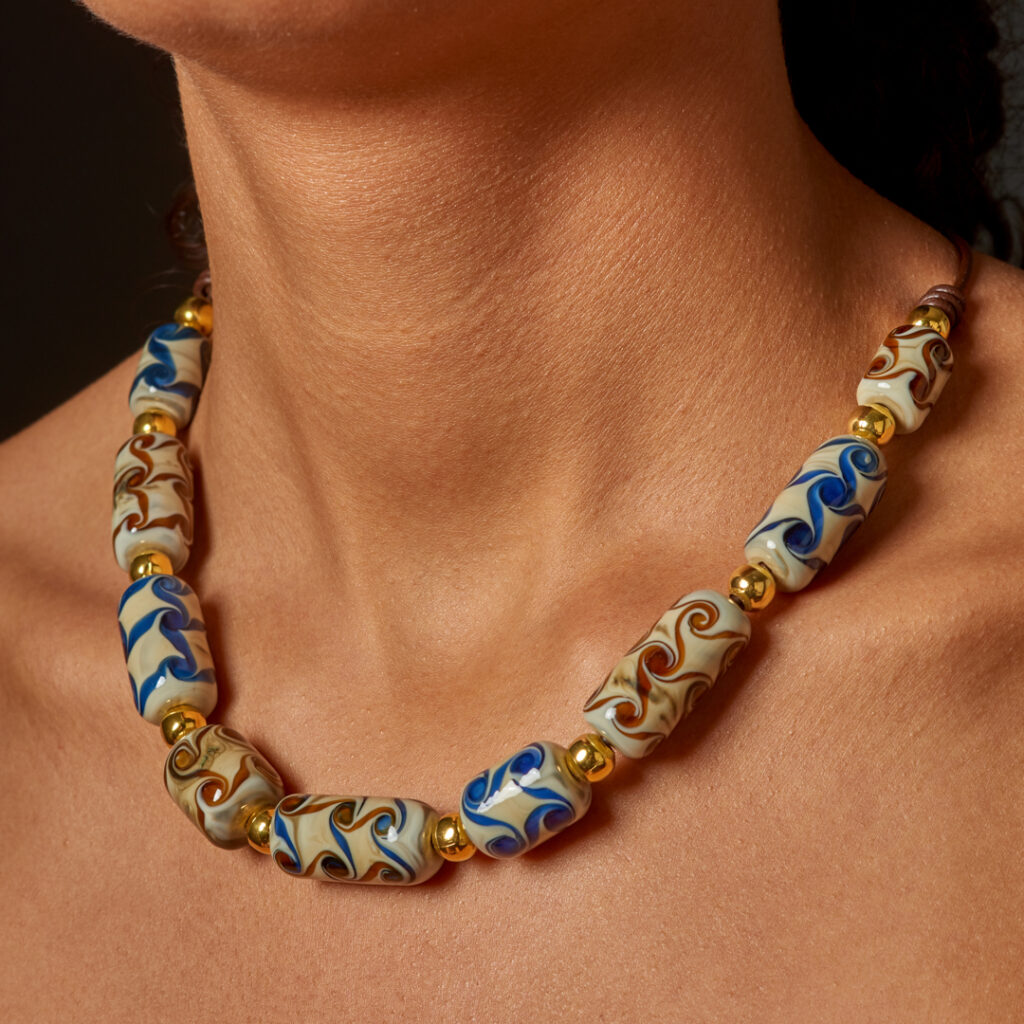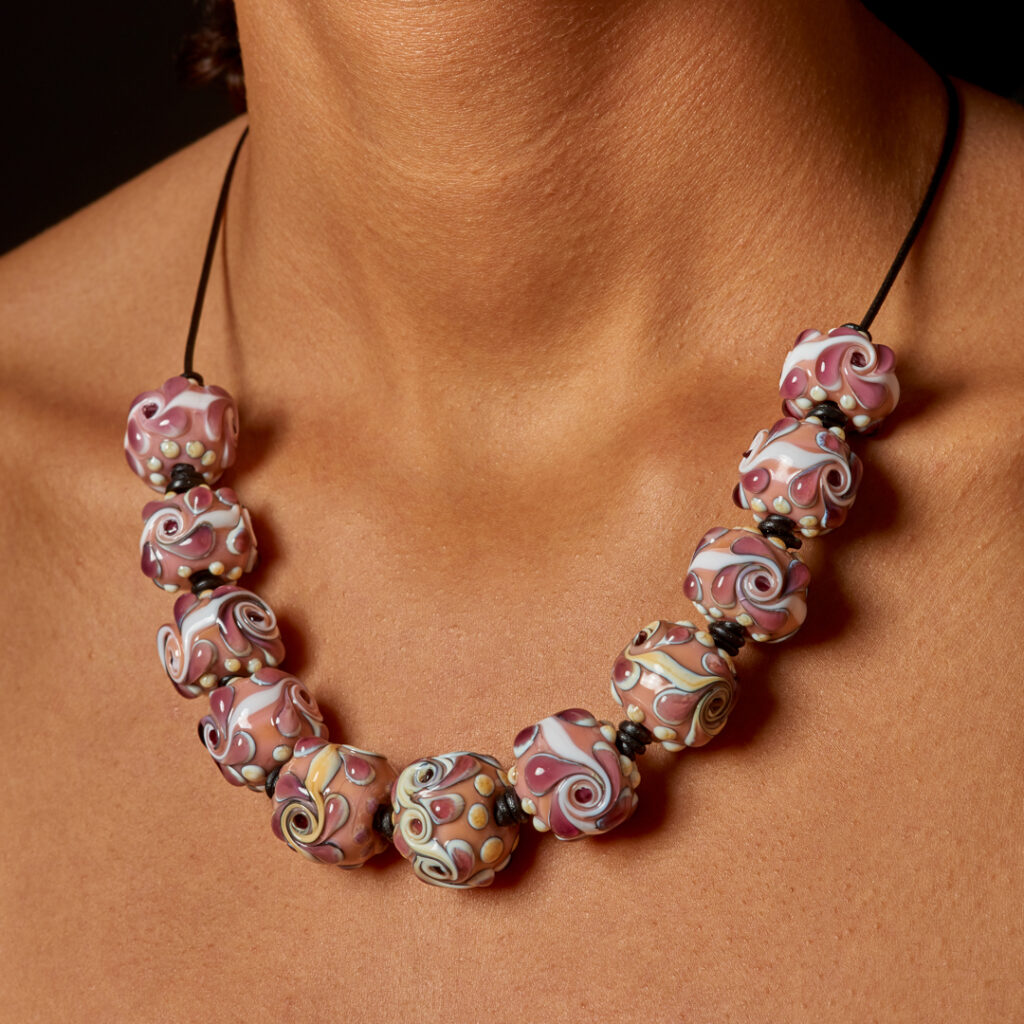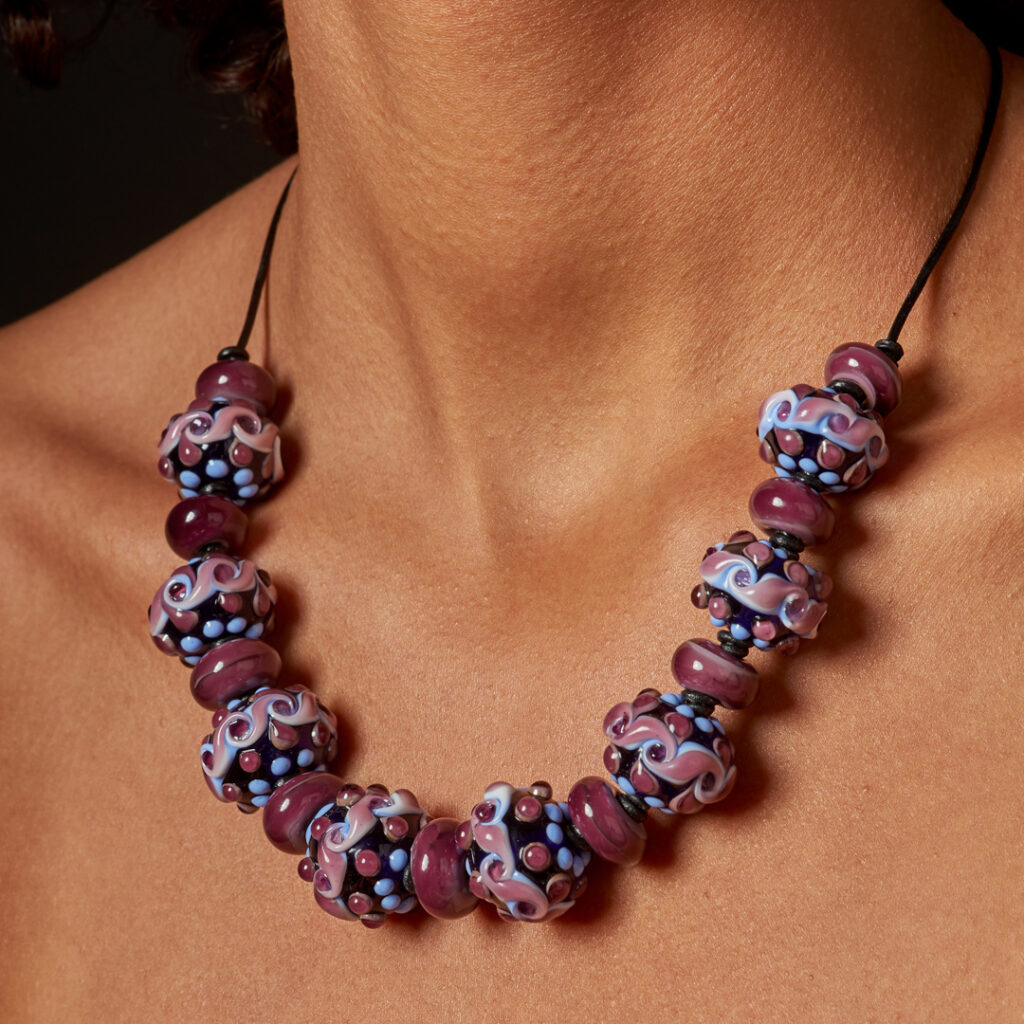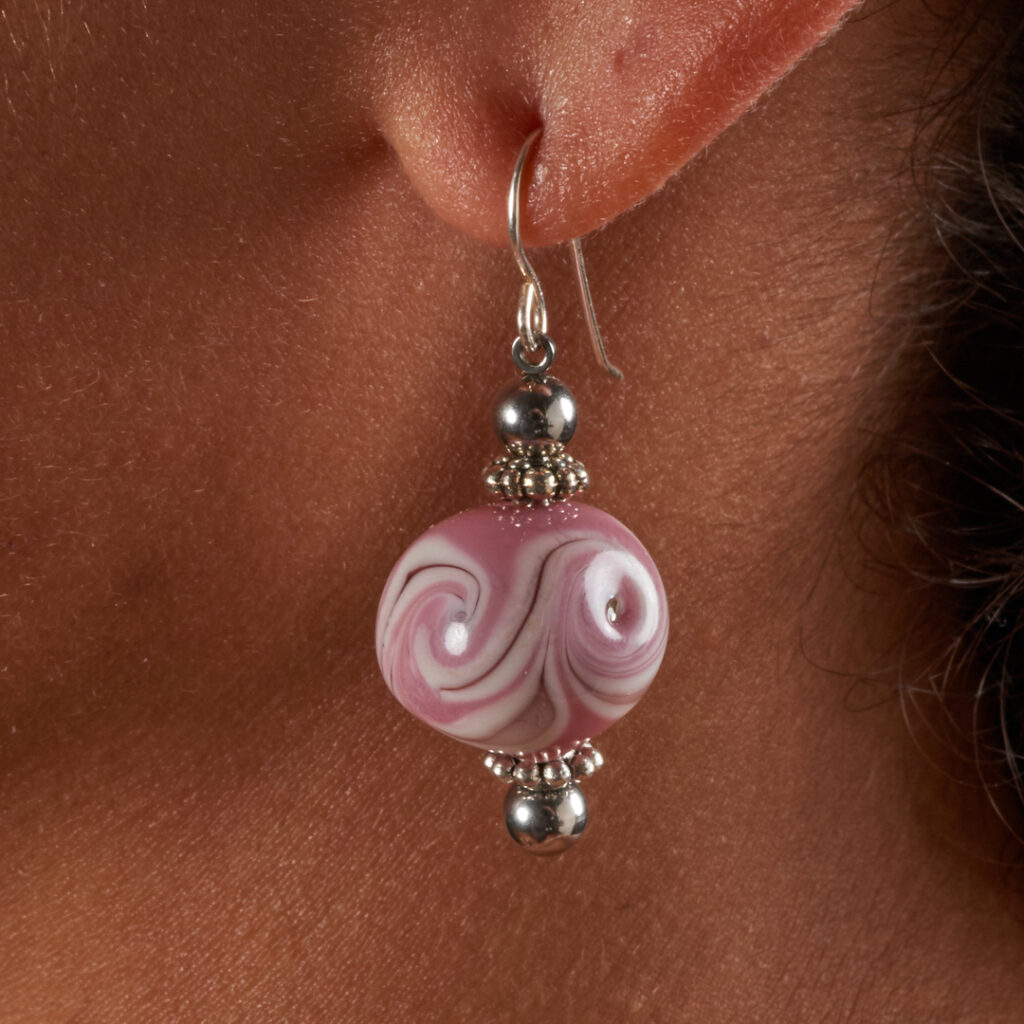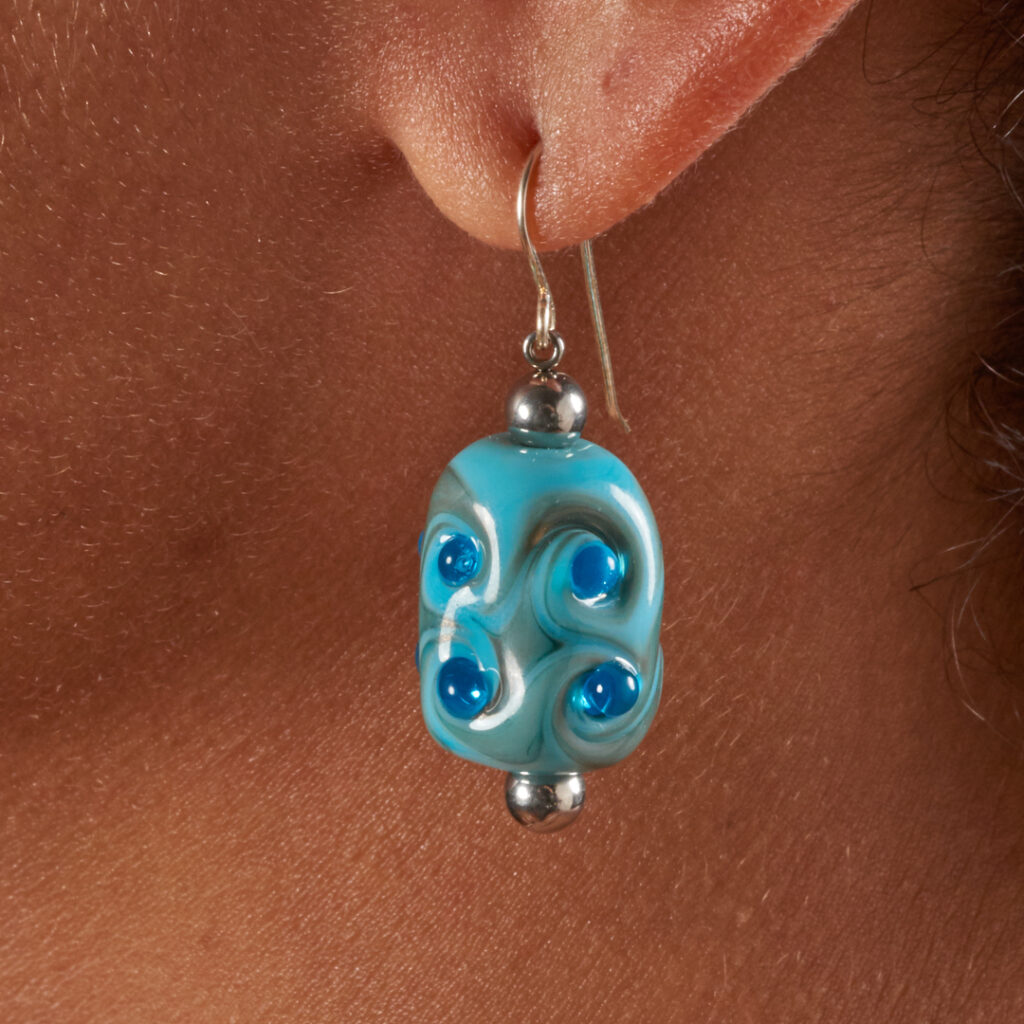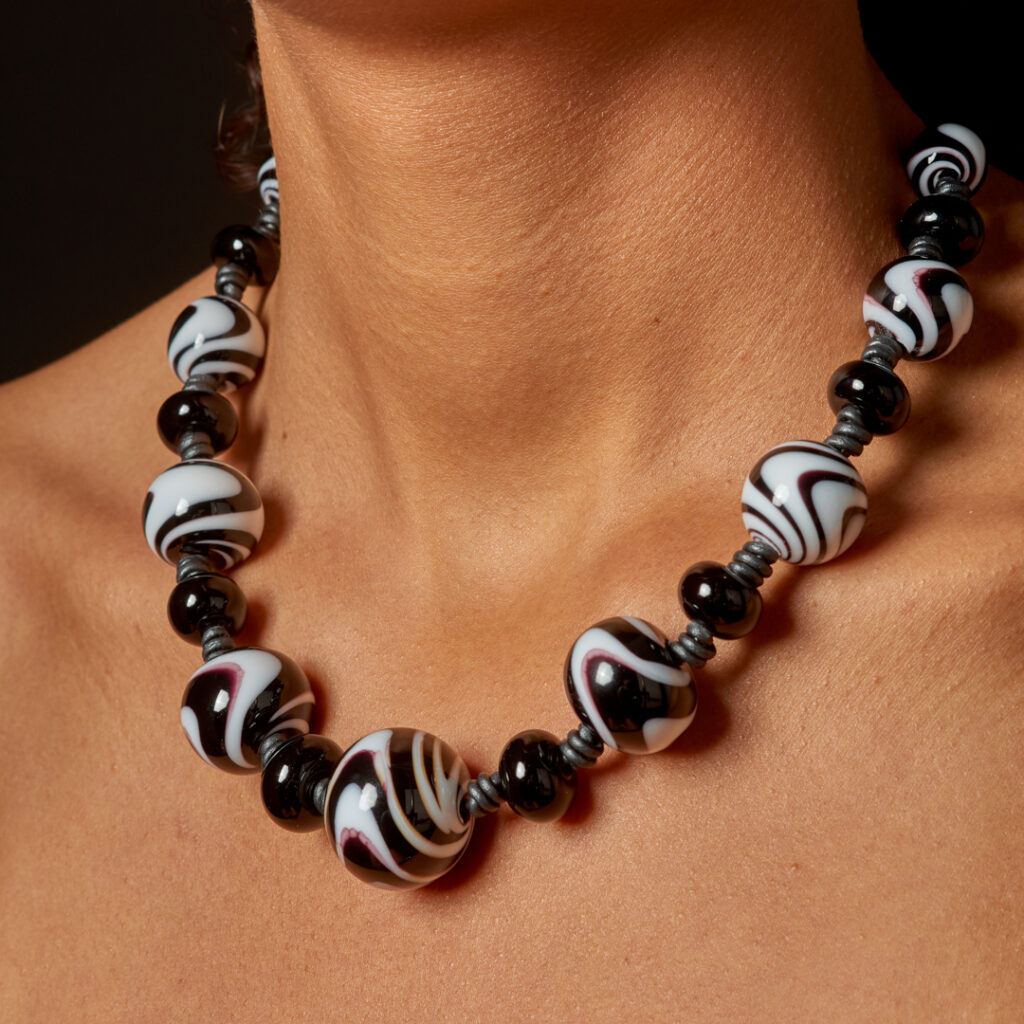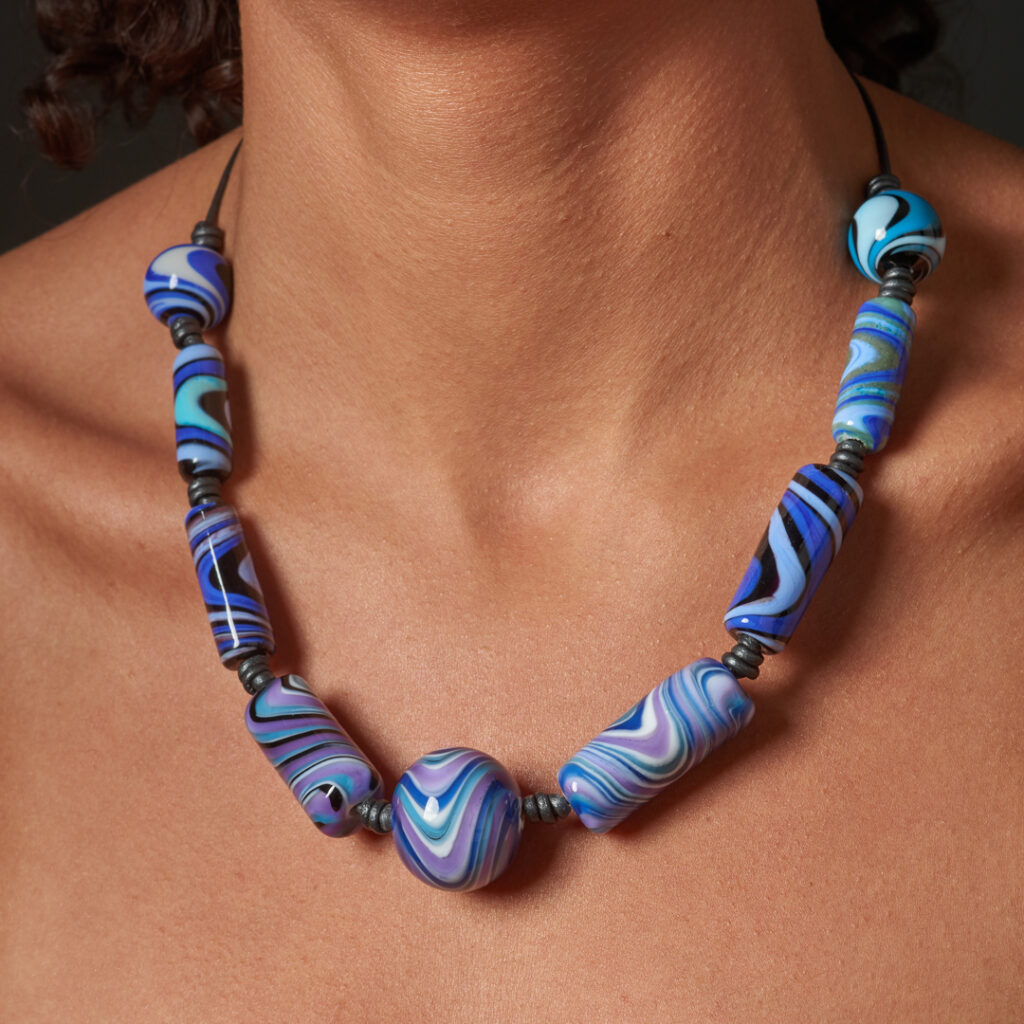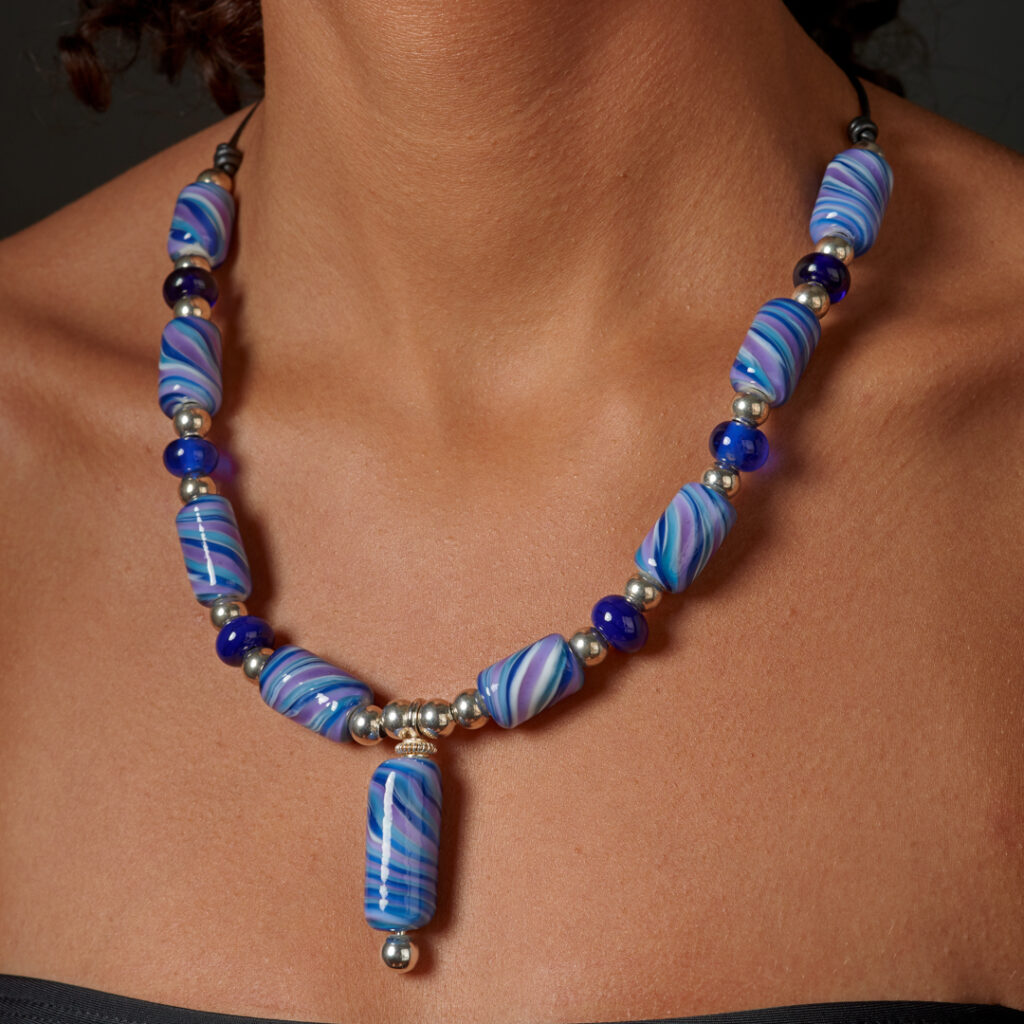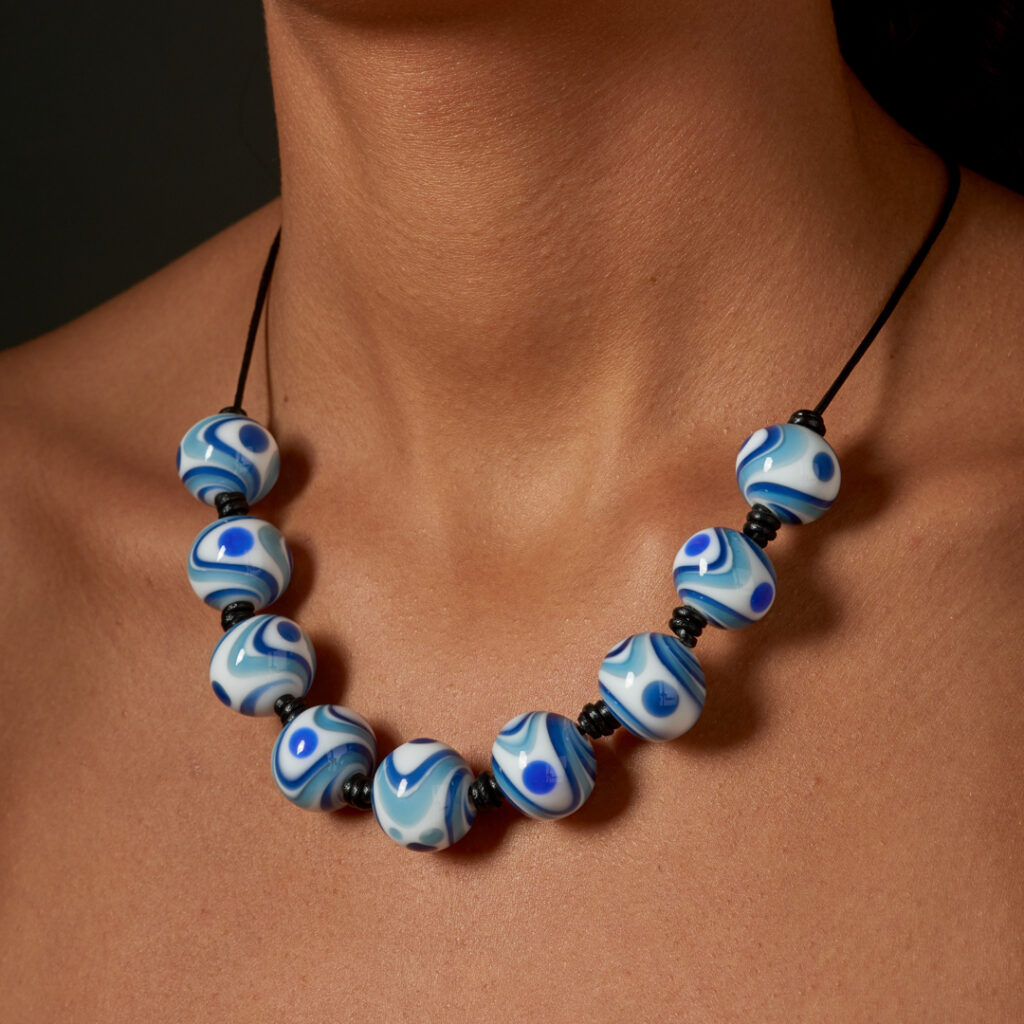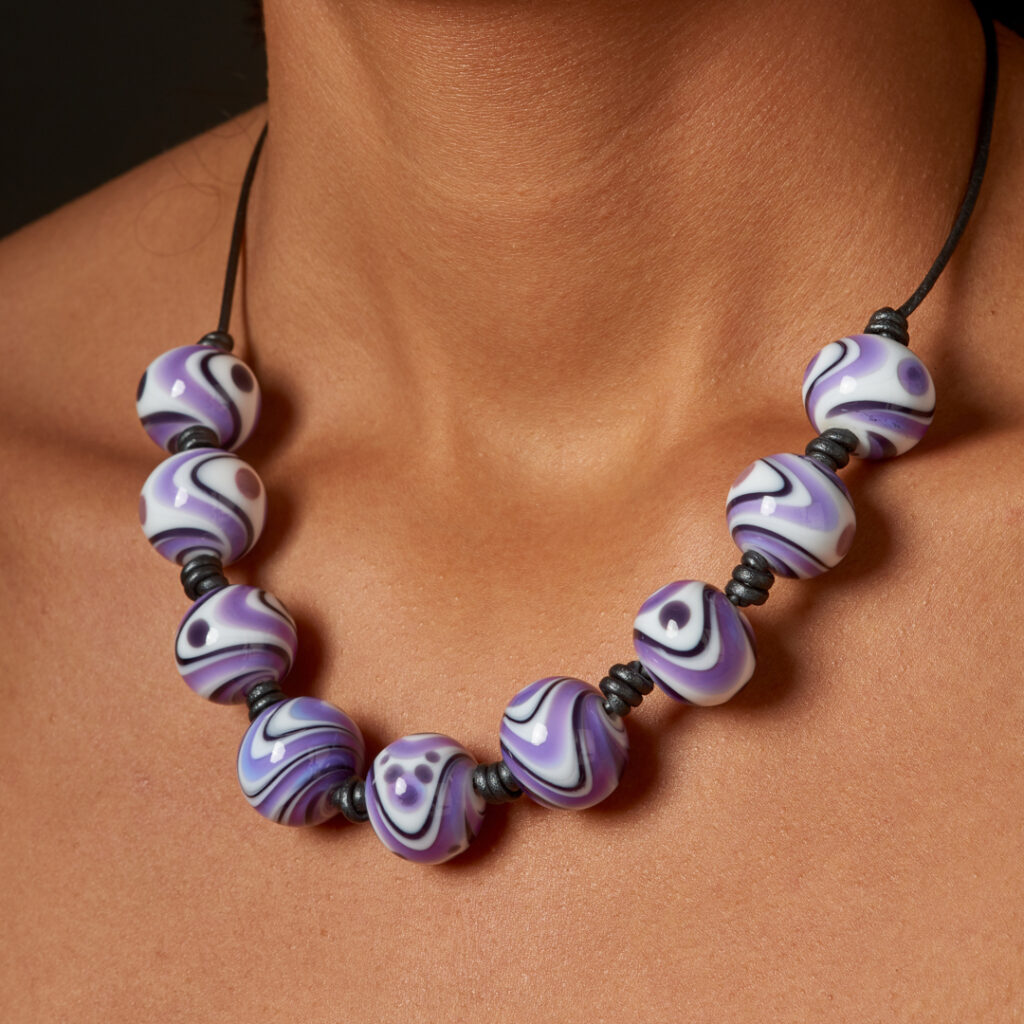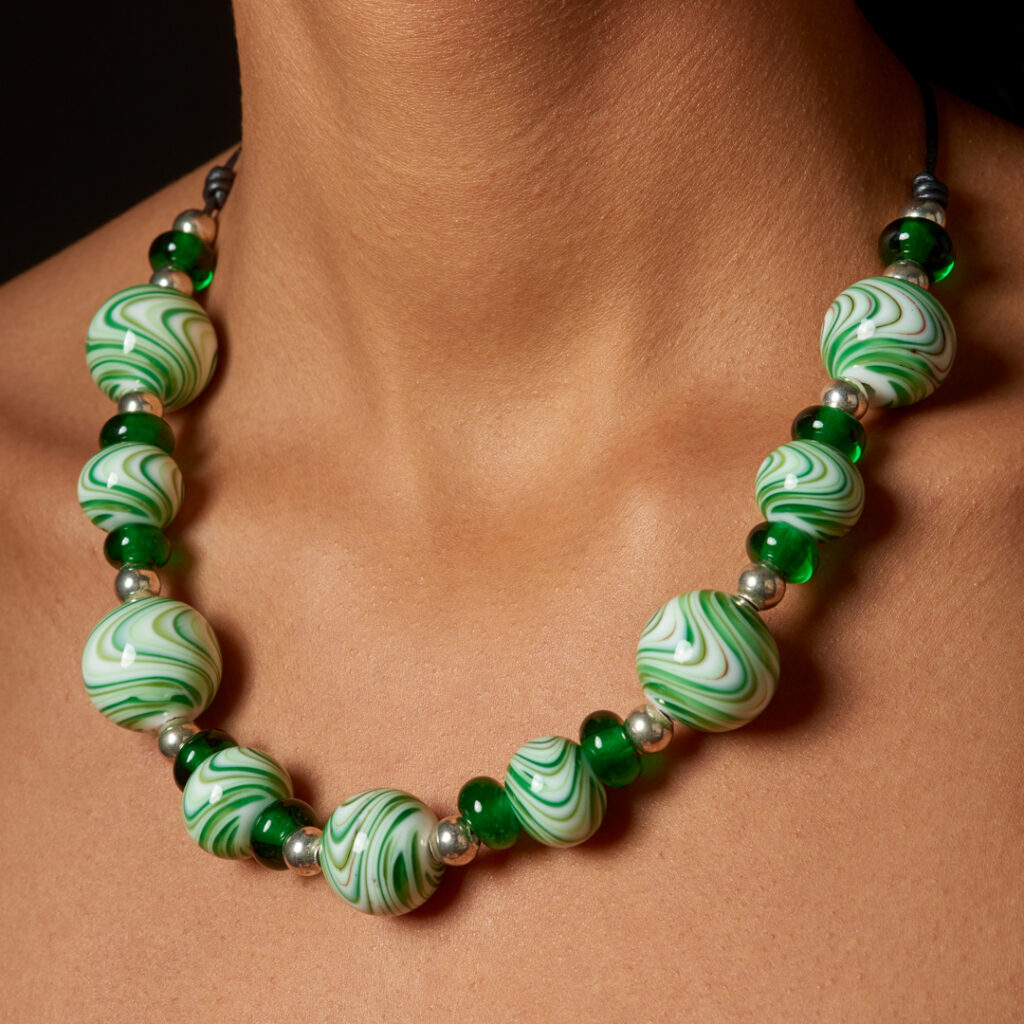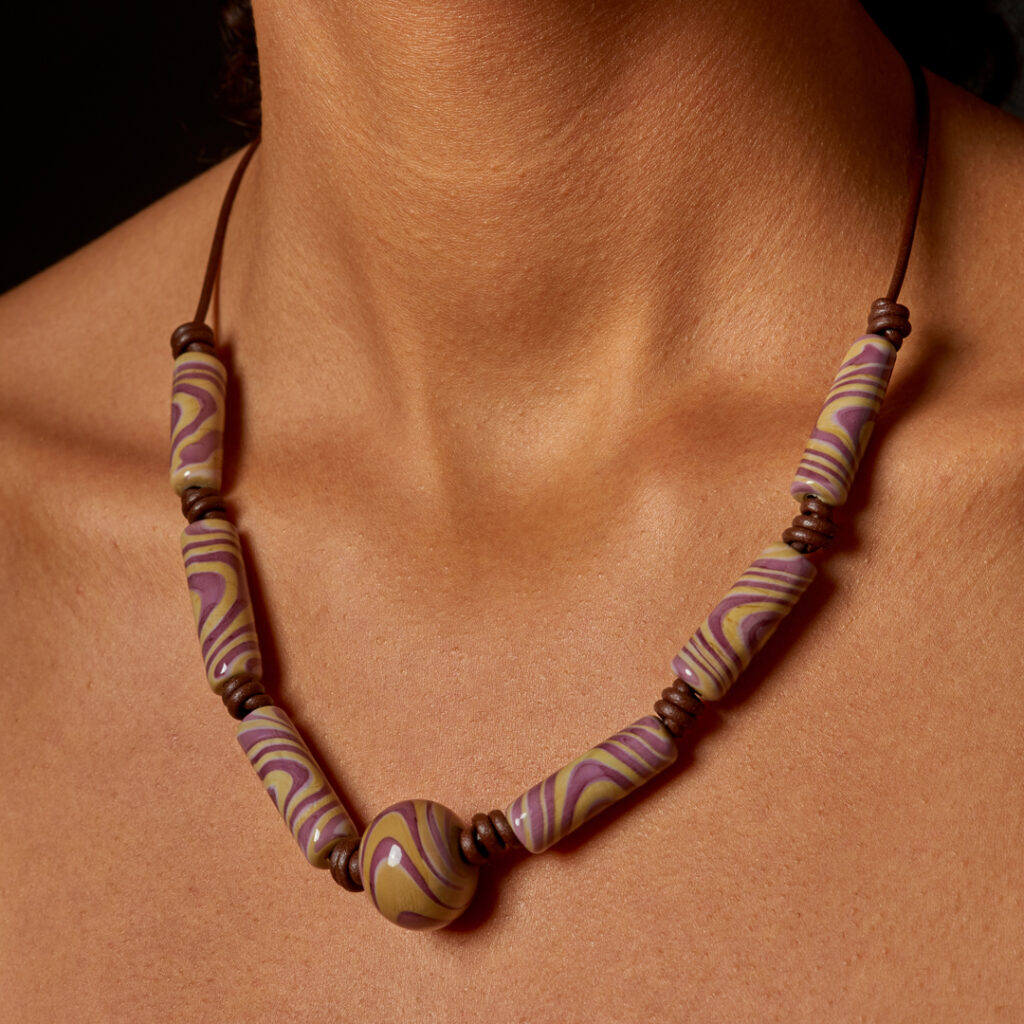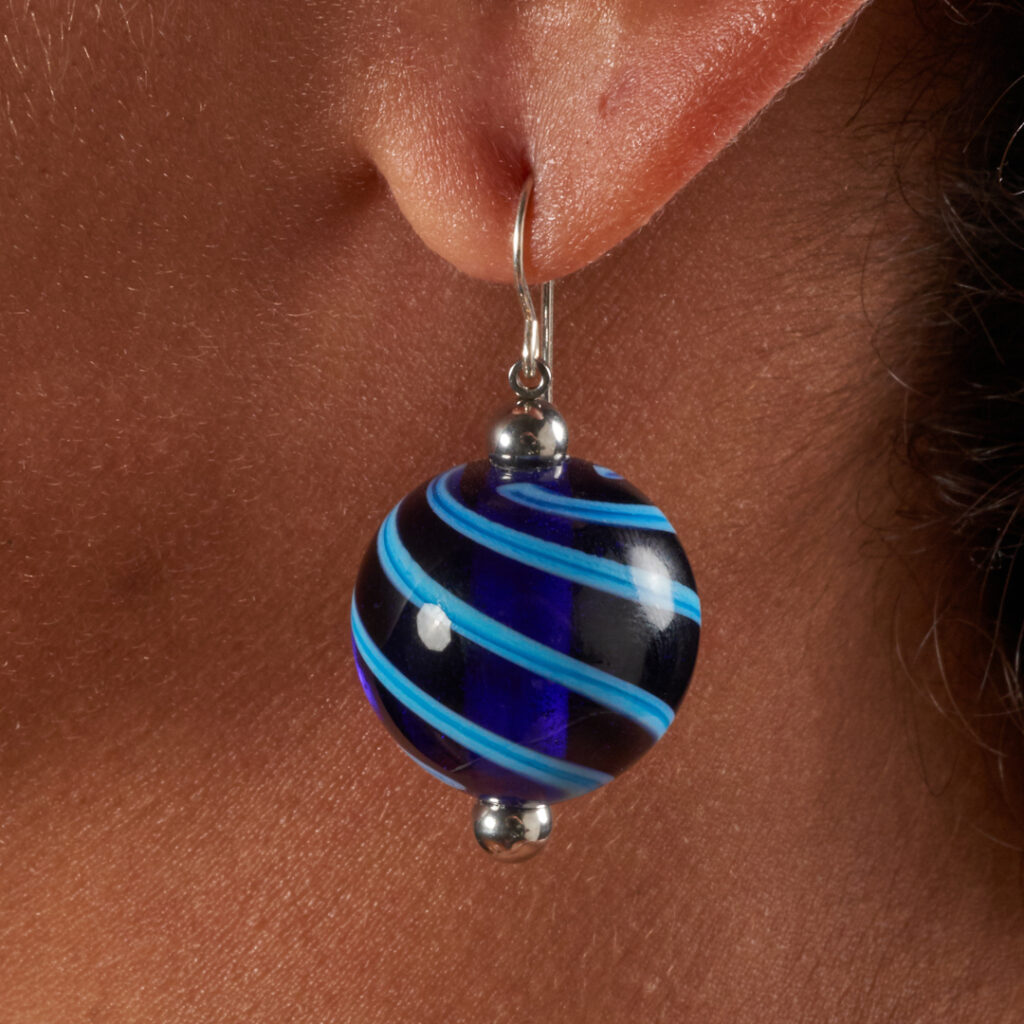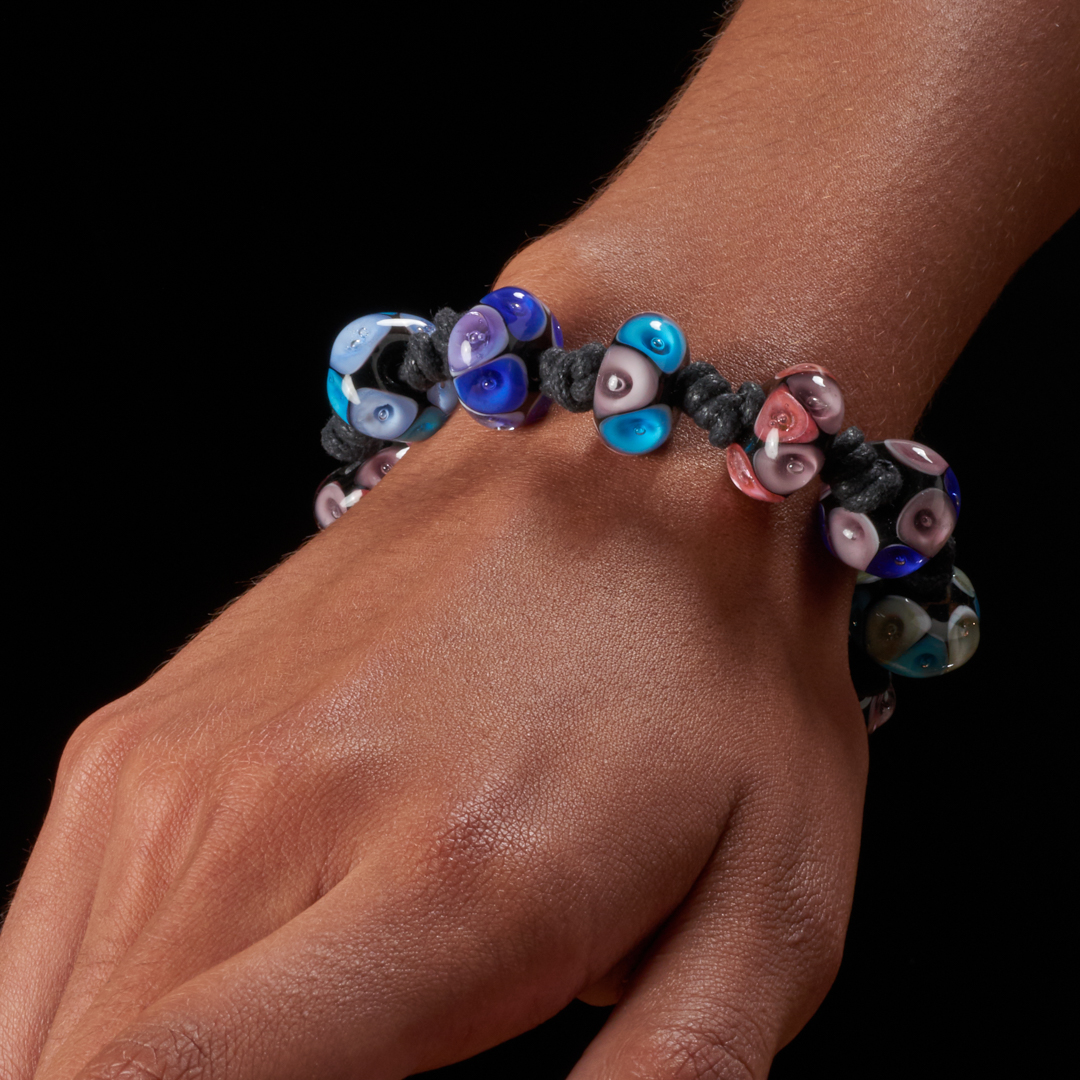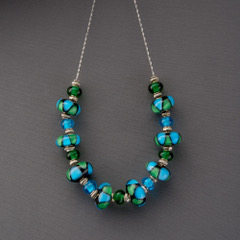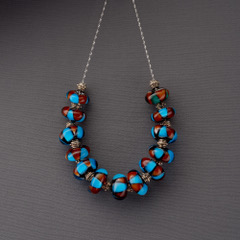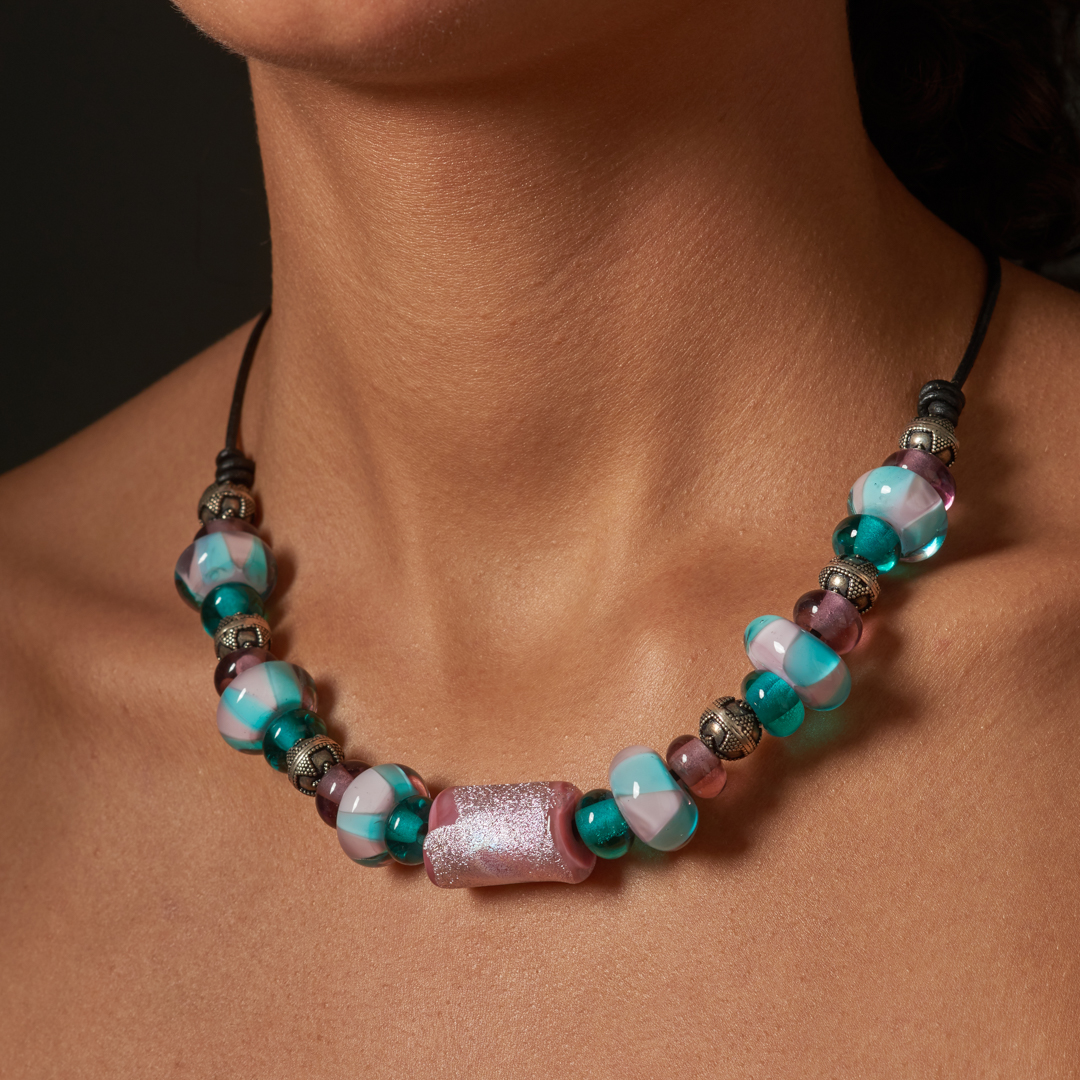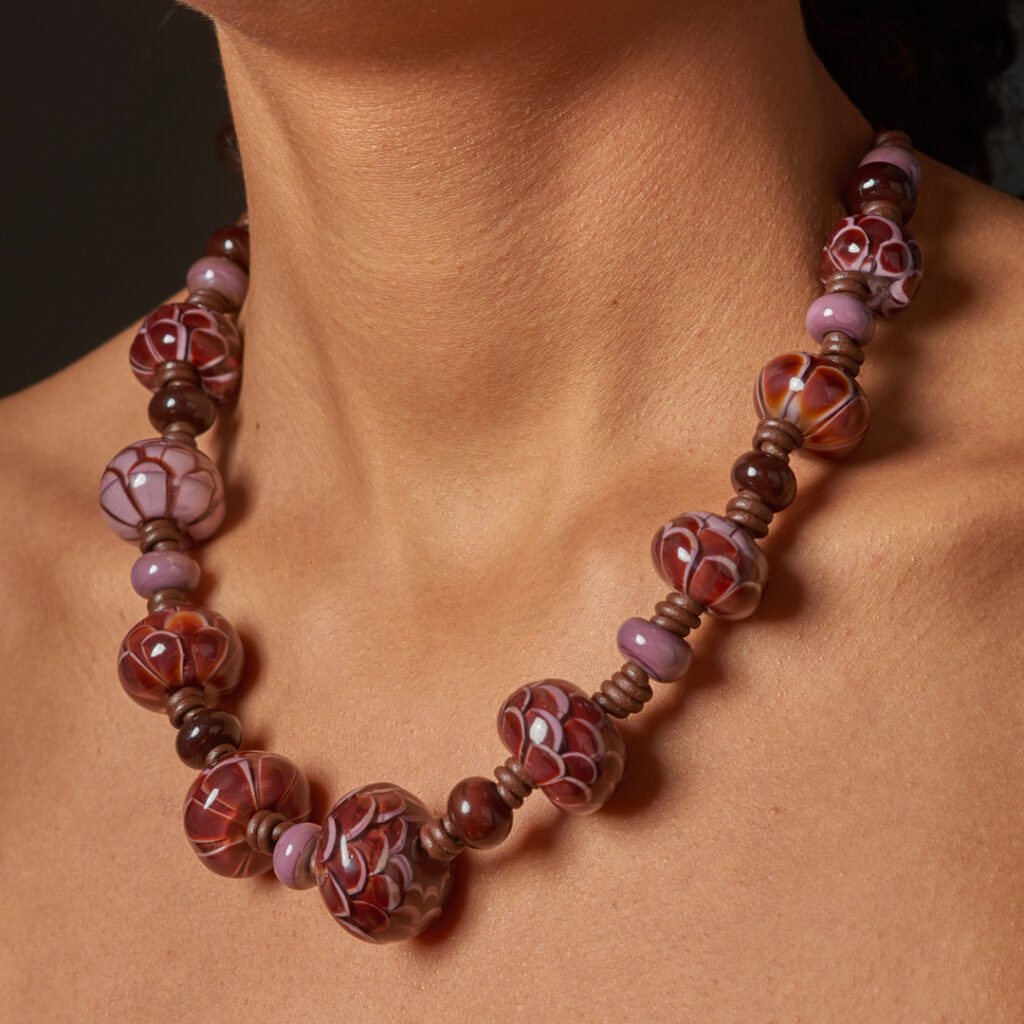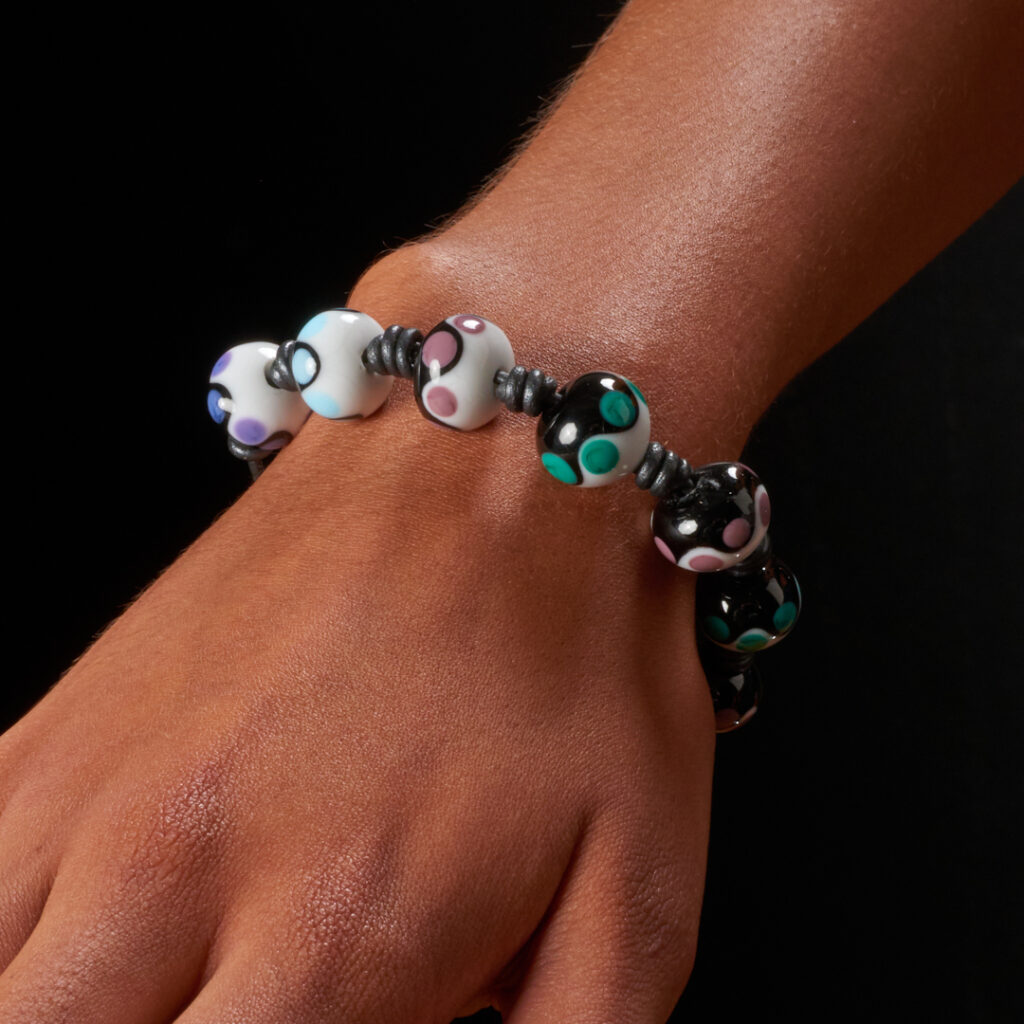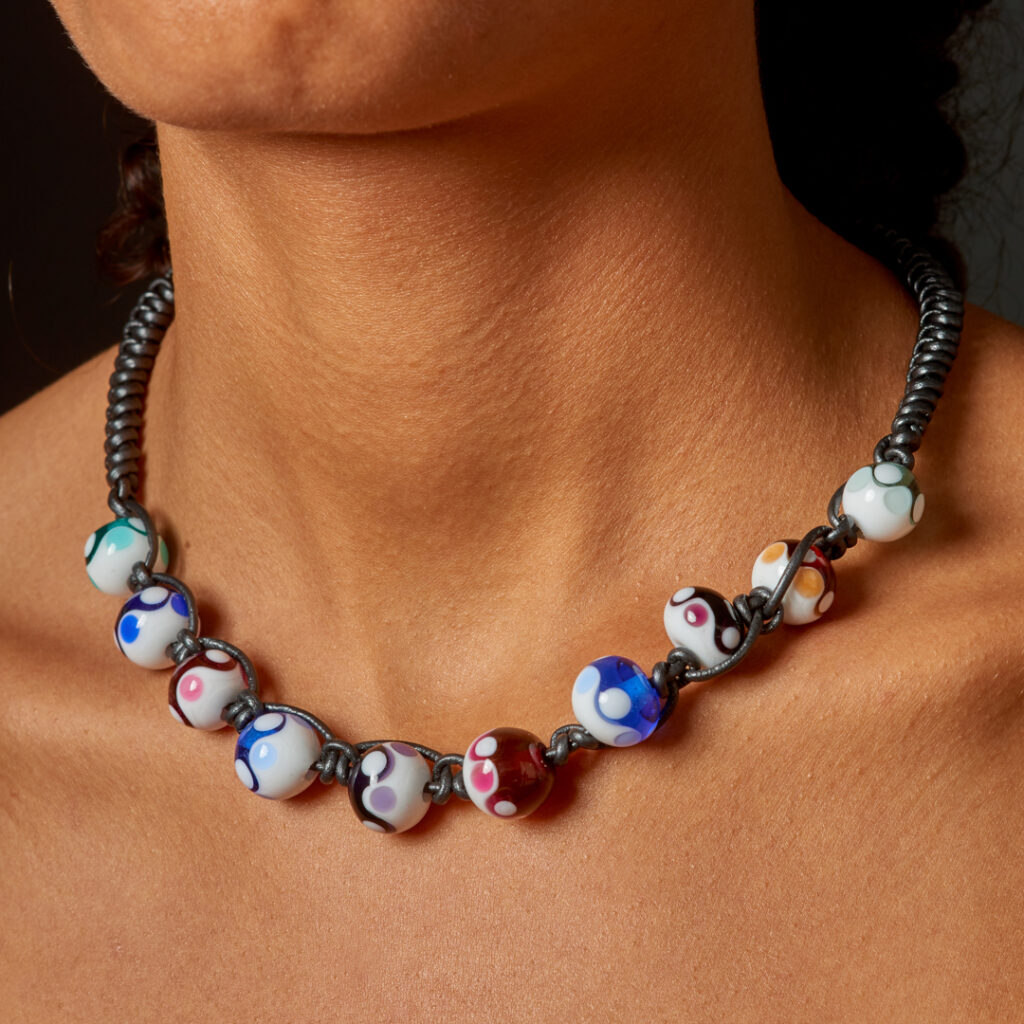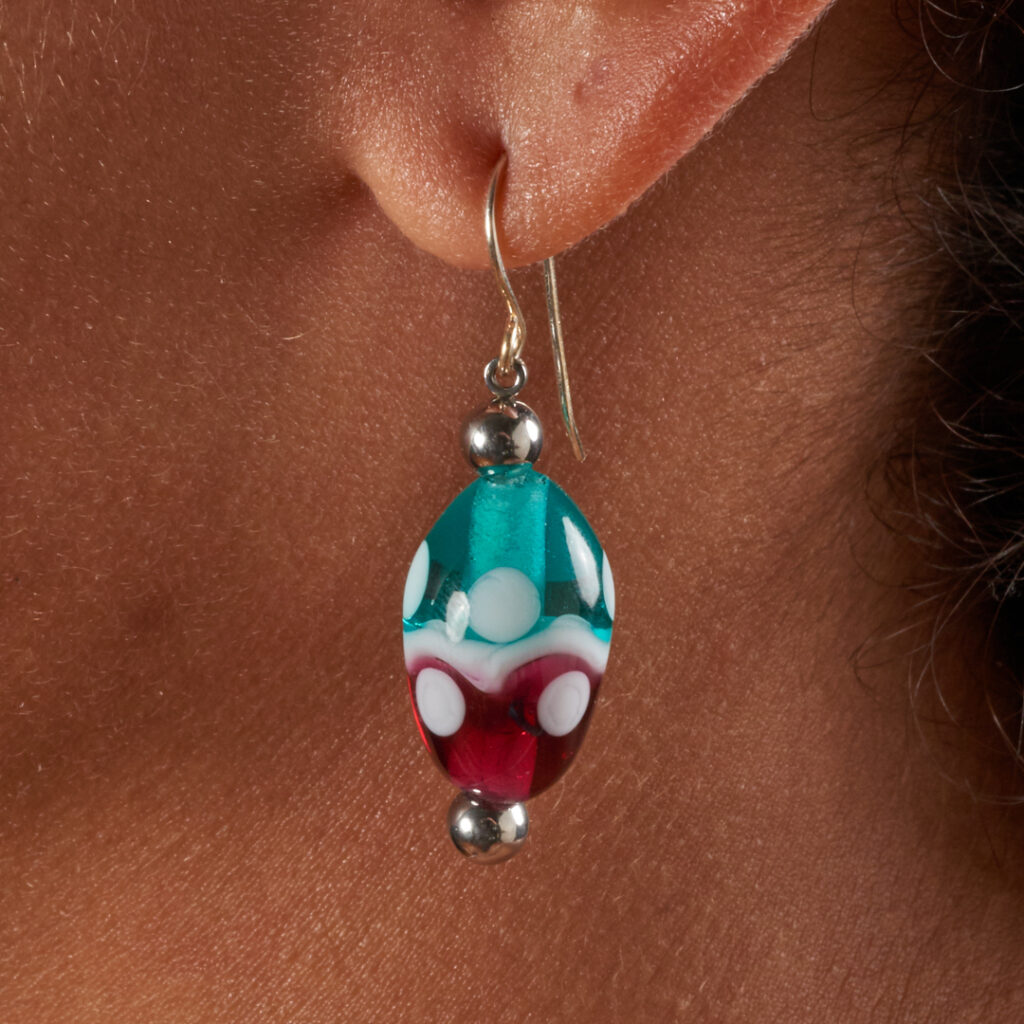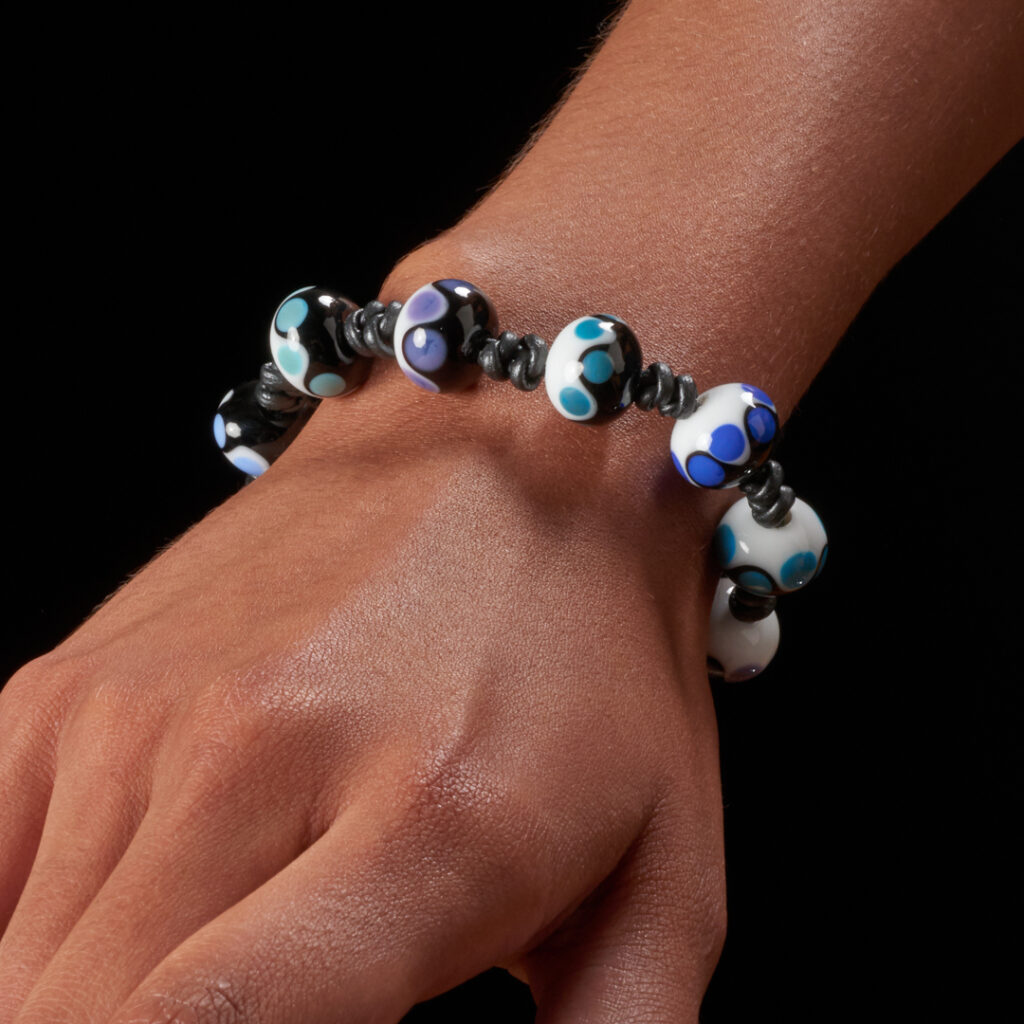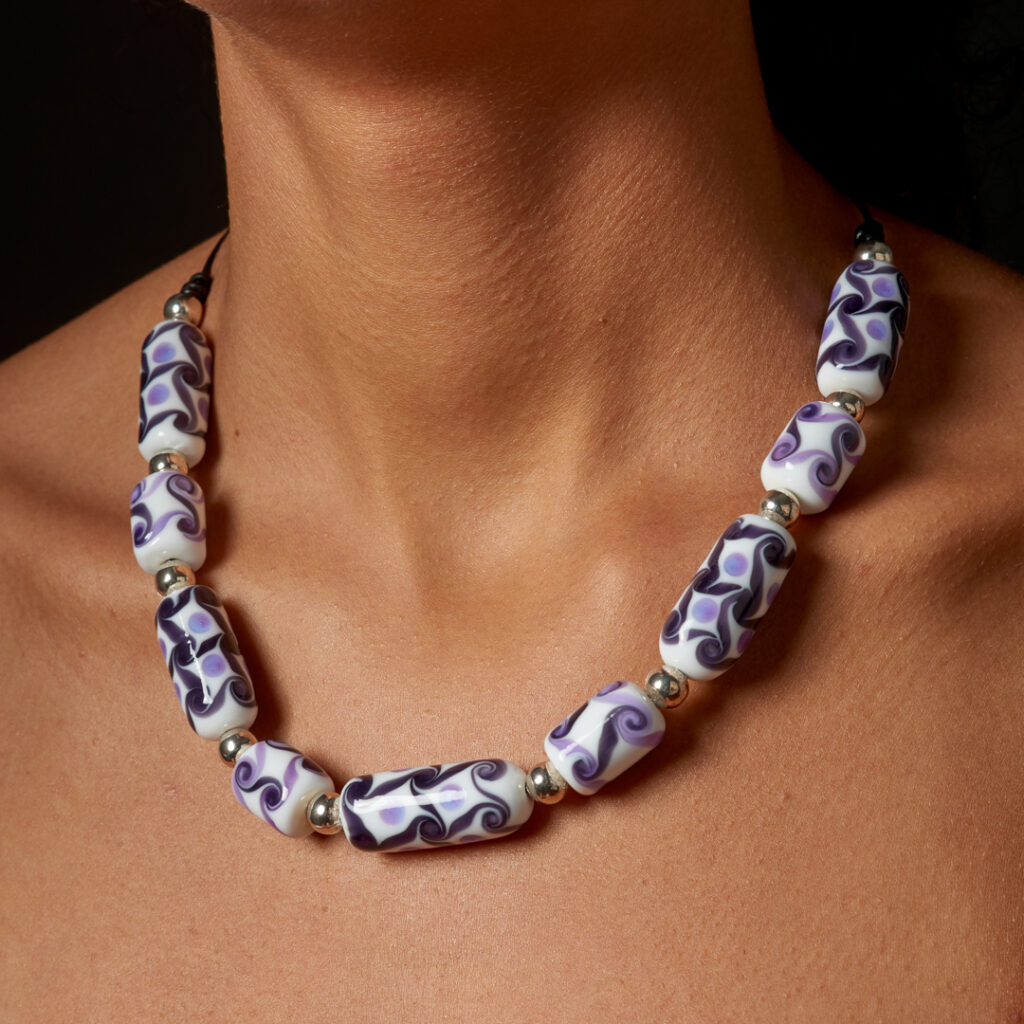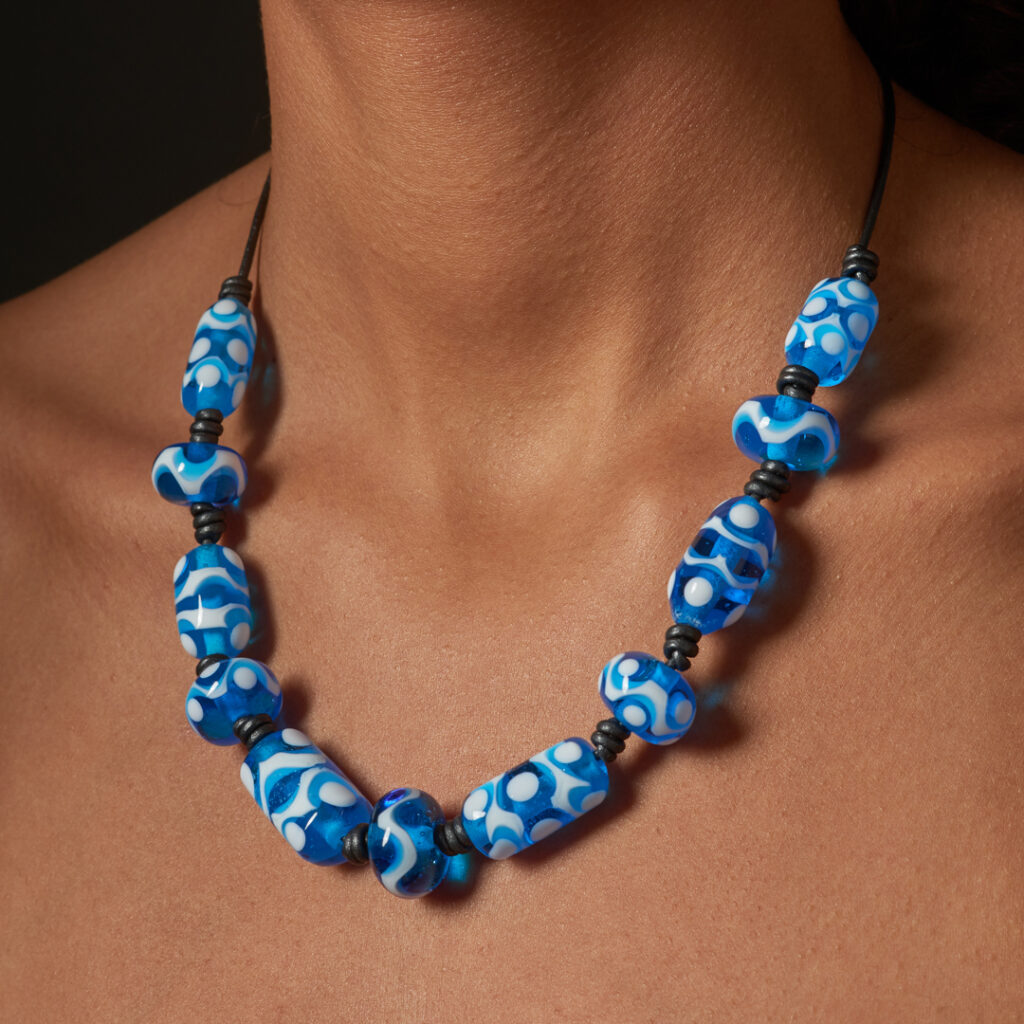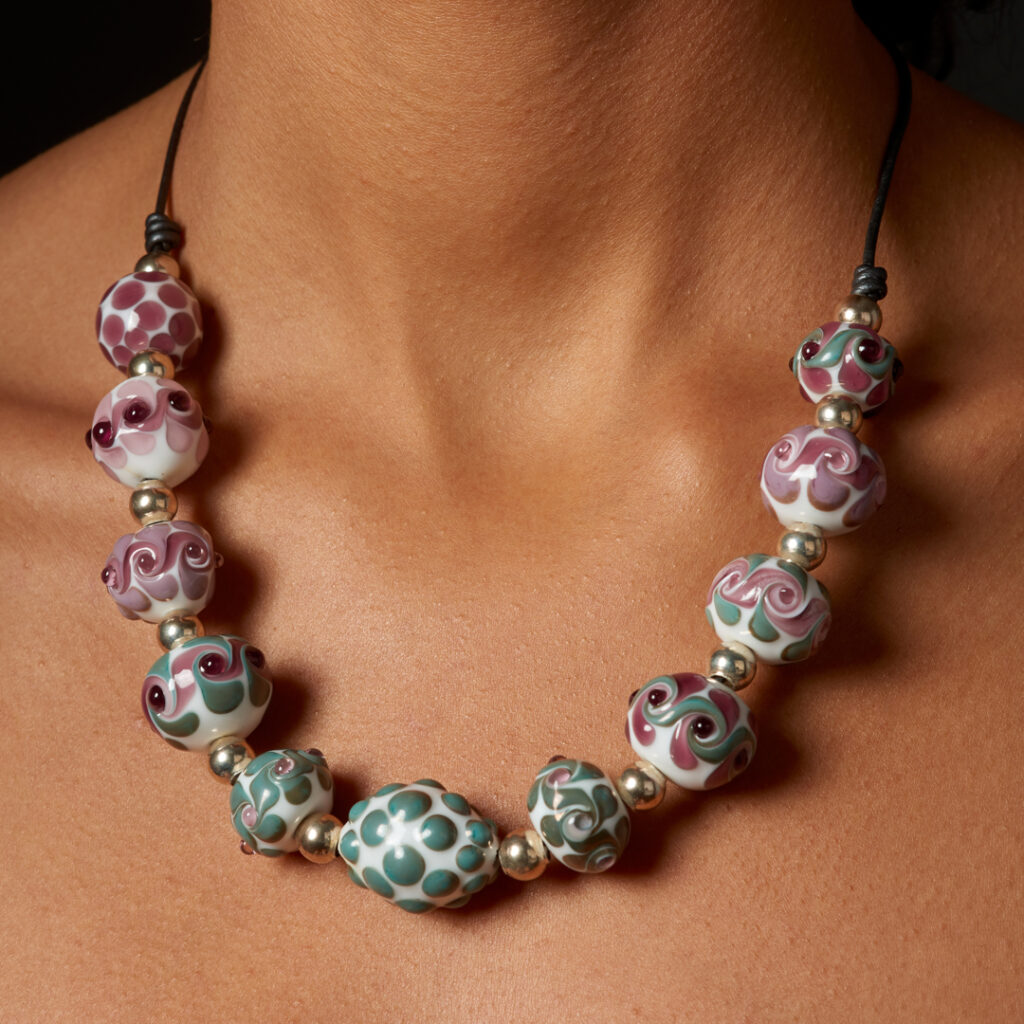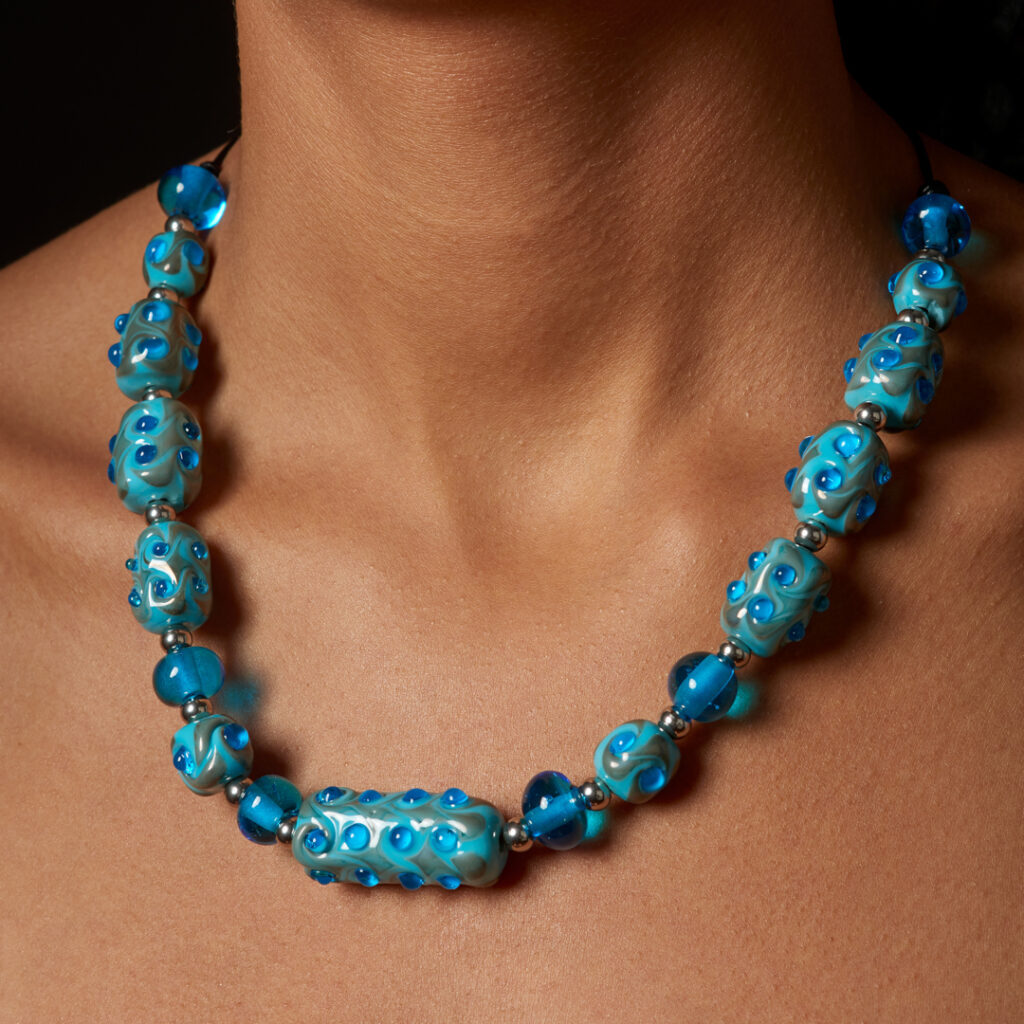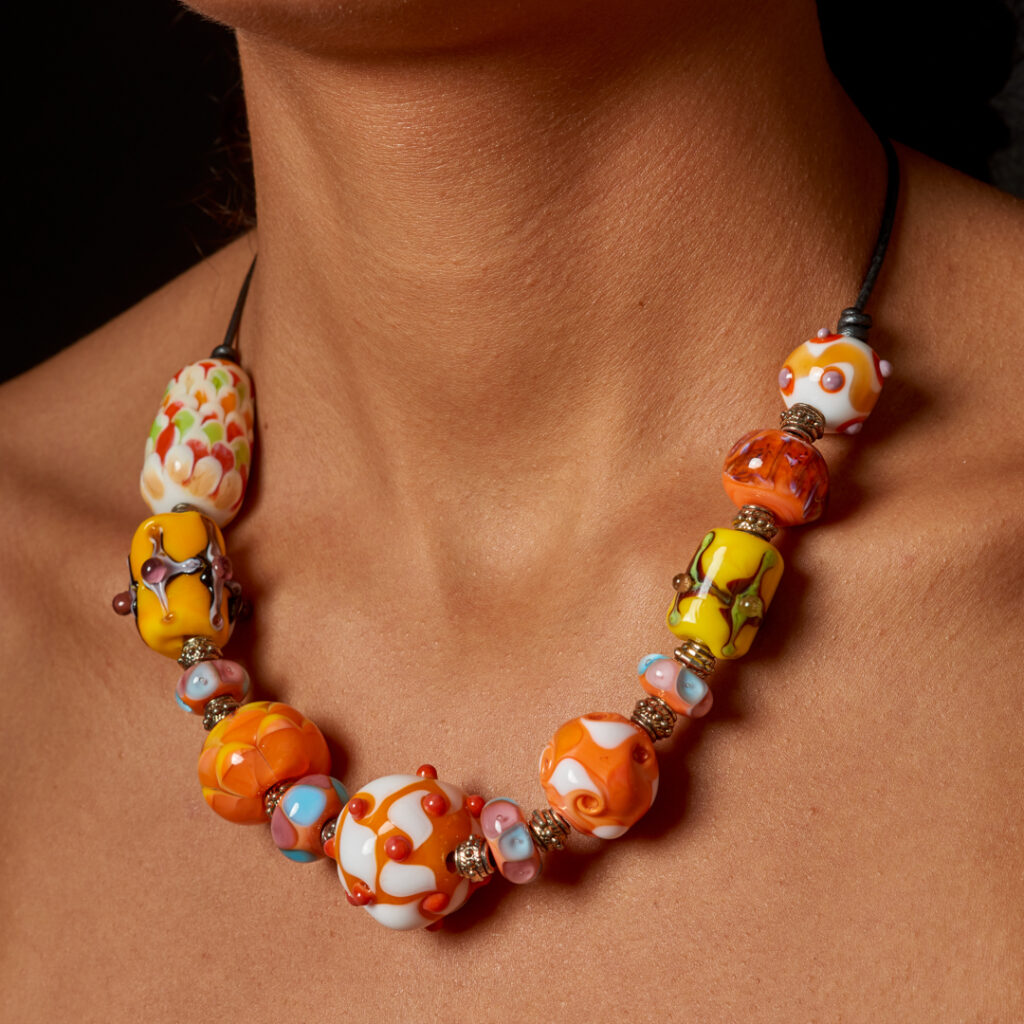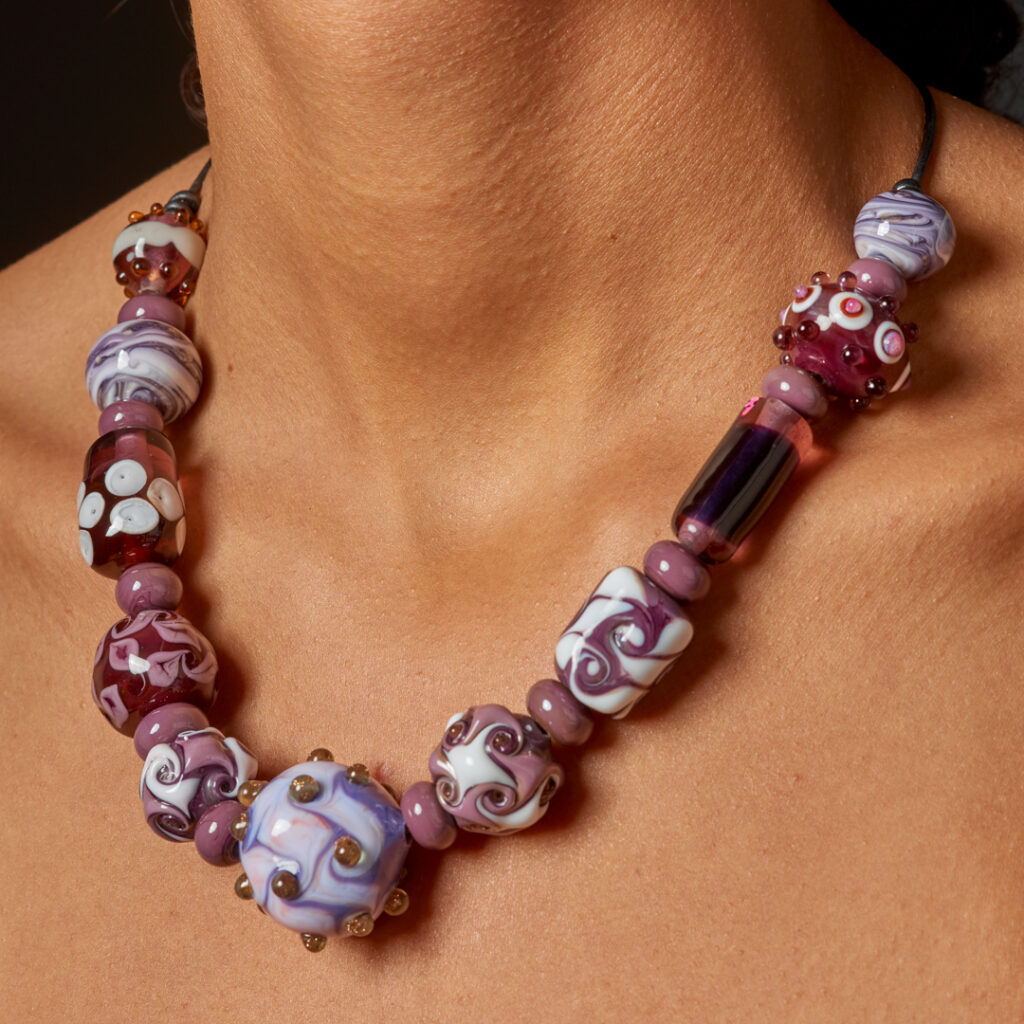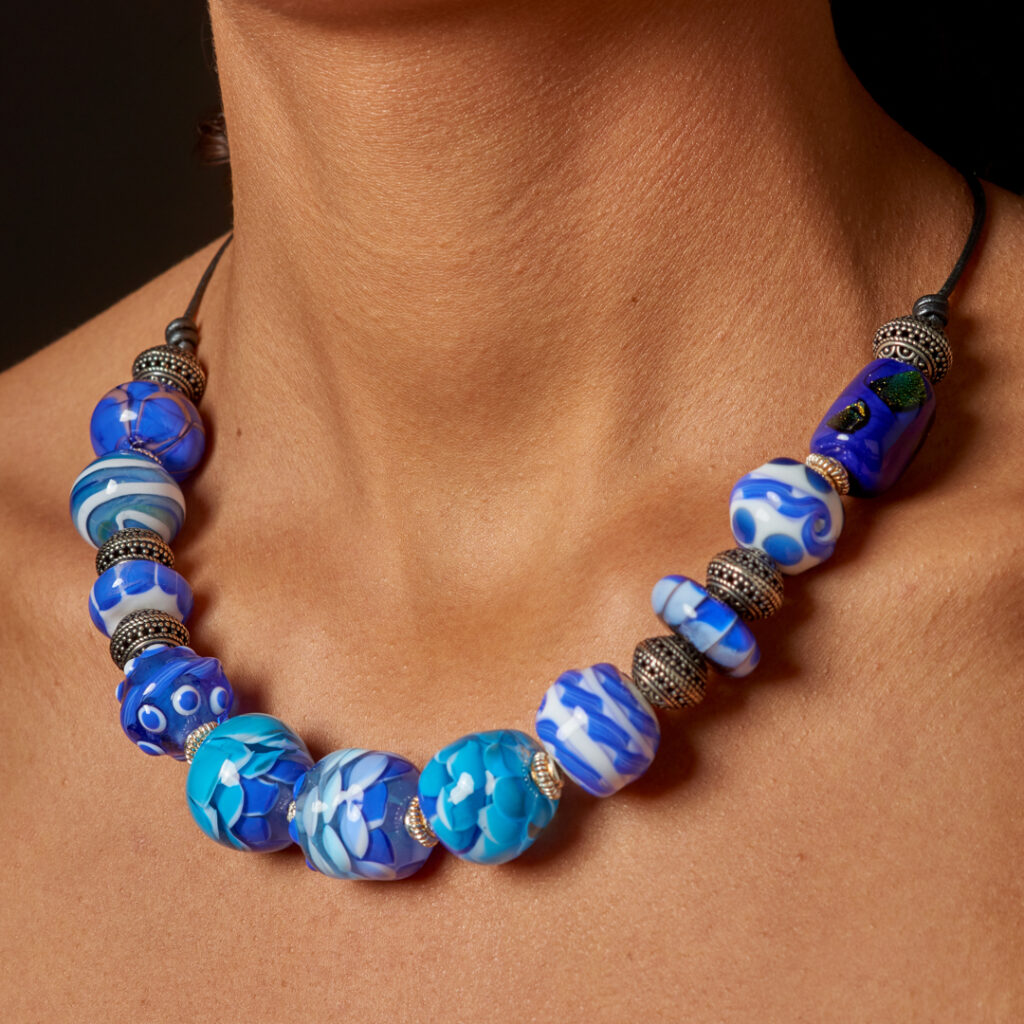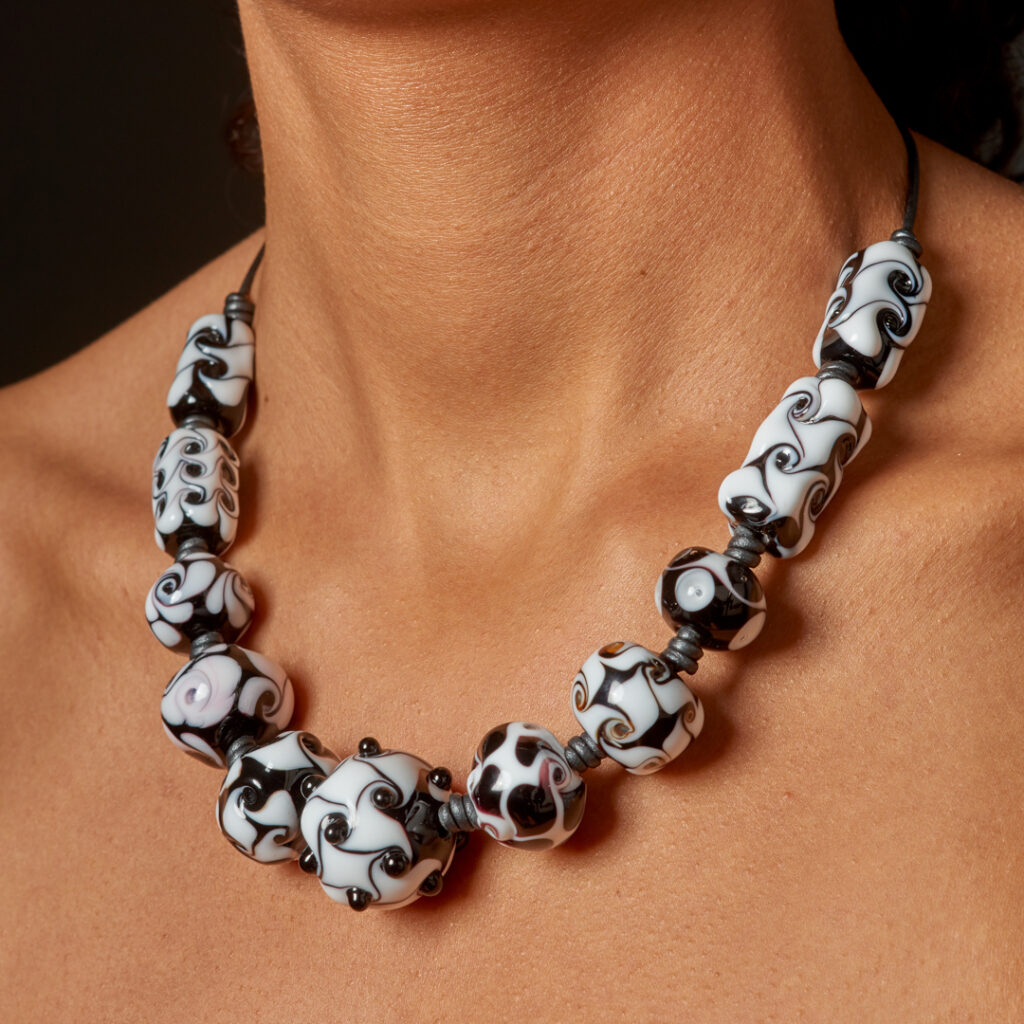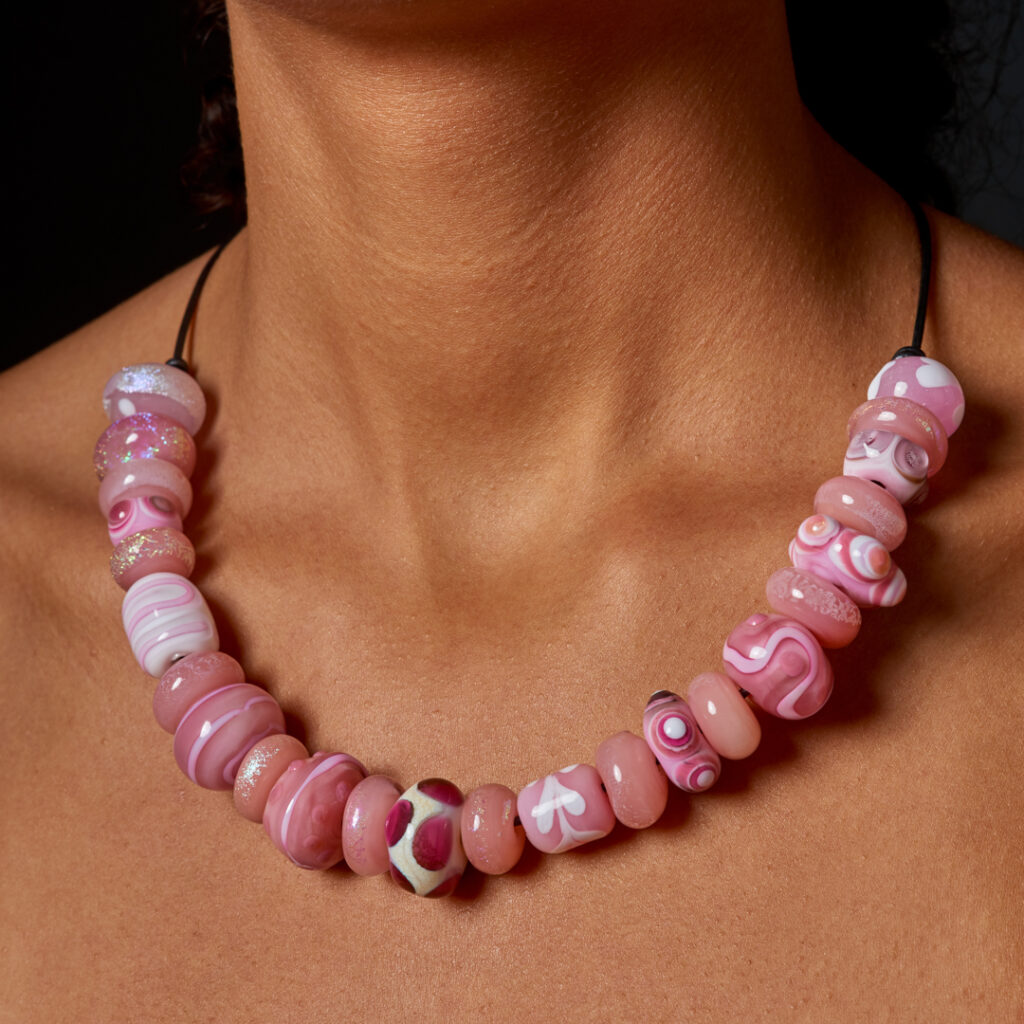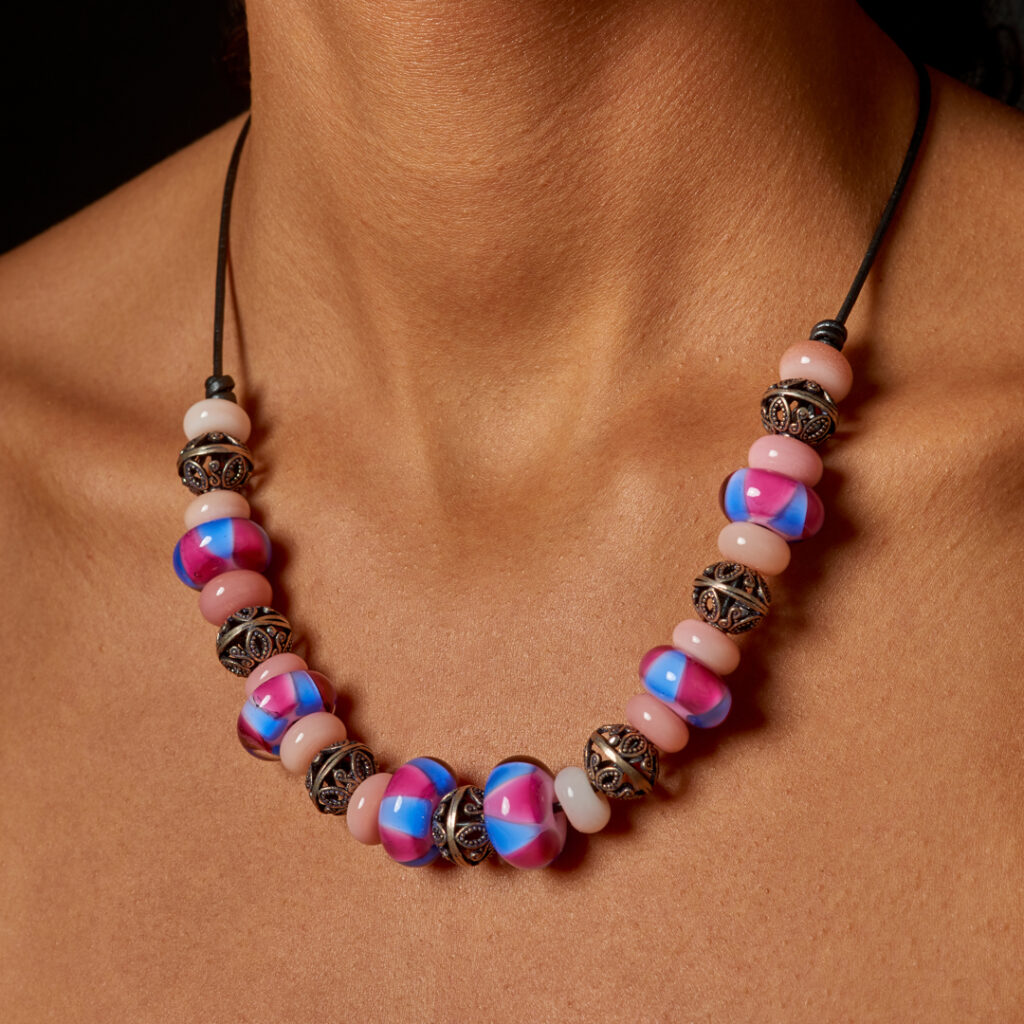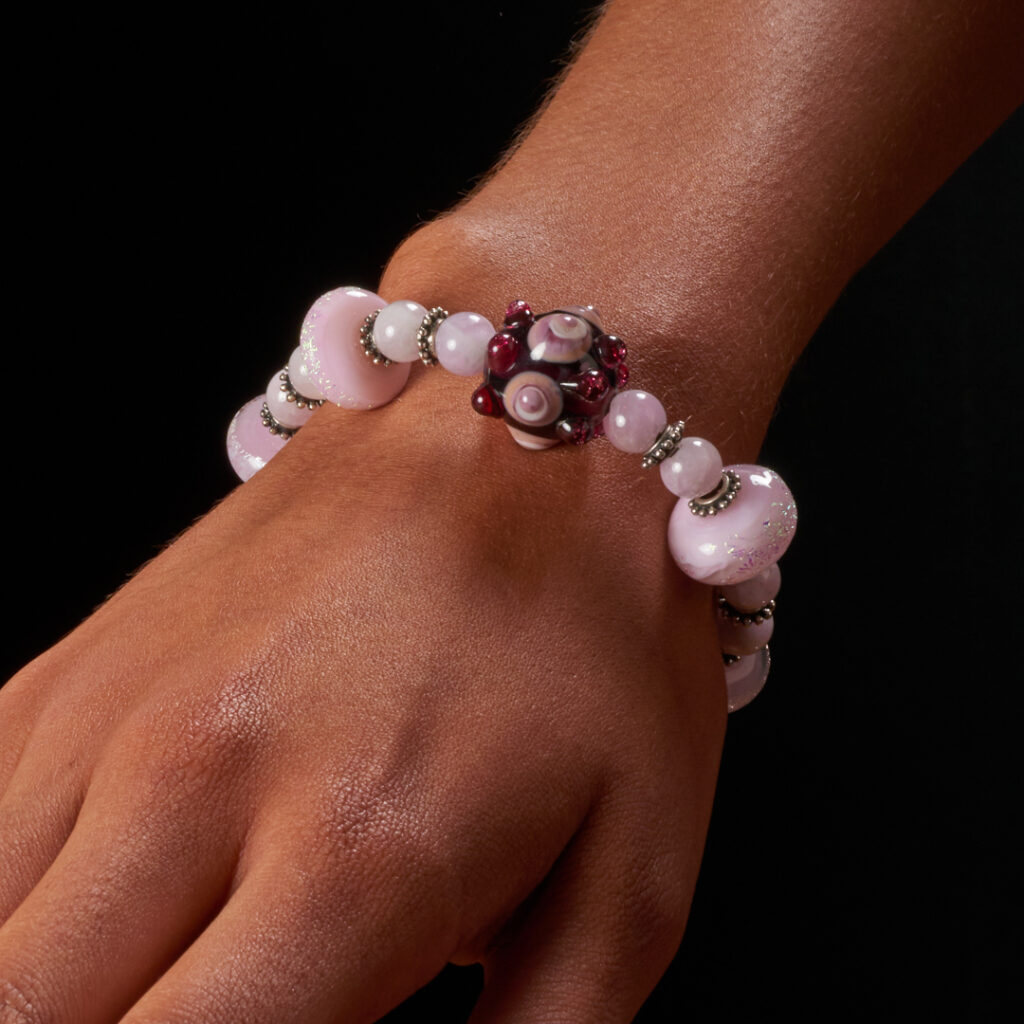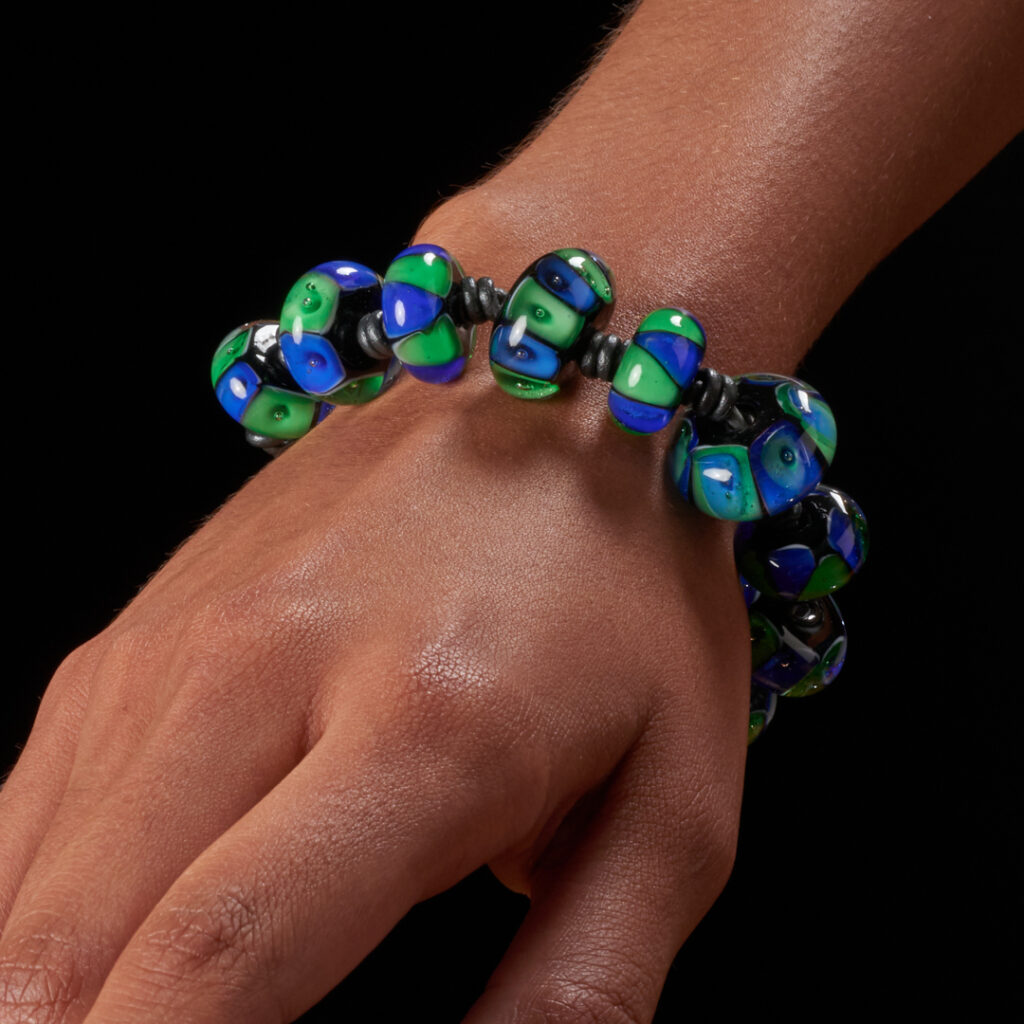All necklaces start with a glass rod shaped into a base bead. That base bead can be round, barreled, conical, or whatever shape you have picked for your necklace. Choosing colors can be tricky as what looks like lime green on a rod may turn out to be yellow after it is annealed. Much time and practice go into knowing how the colors will react to the flame and to the annealing process. Wrapping the glass around a mandrel (a metal rod that creates the hole in the bead) requires an intense degree of focus and precision. The mandrel is continuously kept moving in a circle. Once the initial base bead is made it is time to decorate it.
Dots
This is is the most basic decoration. It seems simple to put a dot on a piece of hot glass, but the most crucial step is the size and placement of that dot to other dots on the surface of the bead.
Dots can be fully melted into the surface or not melted entirely so that texture is provided on the surface. Dots can then be further decorated by stacking, raking, twisting, or a combination thereof.
Twisties
Glass under heat becomes viscous, meaning it flows. The trick is knowing how much heat to use and where you want that heat to be directed in order to control the amount of viscosity the glass has.
A simple glass rod is melted and rolled onto a metal mandrel that has been coated with a “release” that allows the bead to come off after annealing. The shape of this bead is anything you want but not a disc. Put a row of dots down the middle of your shape. Follow this with a row staggered above the first row and below it. If you planned correctly you should have four or five sets of four dots on the base bead. Now heat the center of the first group and with a clear stringer (a smaller glass rod) push it into the center of the heated area and TWIST. If you heated the center enough it should twist easily. Let the stringer cool and break it off. Do the same to all sets of four.
Gravity
Gravity beads get their unique design by adding stripes of color across the base bead then heating it up and letting the bead get very hot so that as you continually rotate the bead the stripes melt into the base and flow downward making that V design.
Triangle
This bead is usually smaller and definitely disc-shaped. Two rows of dots are applied with white glass. The rows are placed on the “shoulders” of the base bead and the dots are staggered. They are melted flat. A second color is applied over the white dot and then a layer of clear transparent. Everything is melted in. If you have placed the dots correctly and used the heat evenly triangles should have formed.
Petals
Petals are very difficult to make. Hence the price and limited offerings. A combination of all the techniques in lamp working are needed to achieve the desired result. This is one where practice, practice, practice eventually pays off.
Wavys
These are a combination bead. The bead comes in two colors. Dots are added close enough to where the two colors meet so that the dot actually pushes the colors into a wave effect.
Hearts
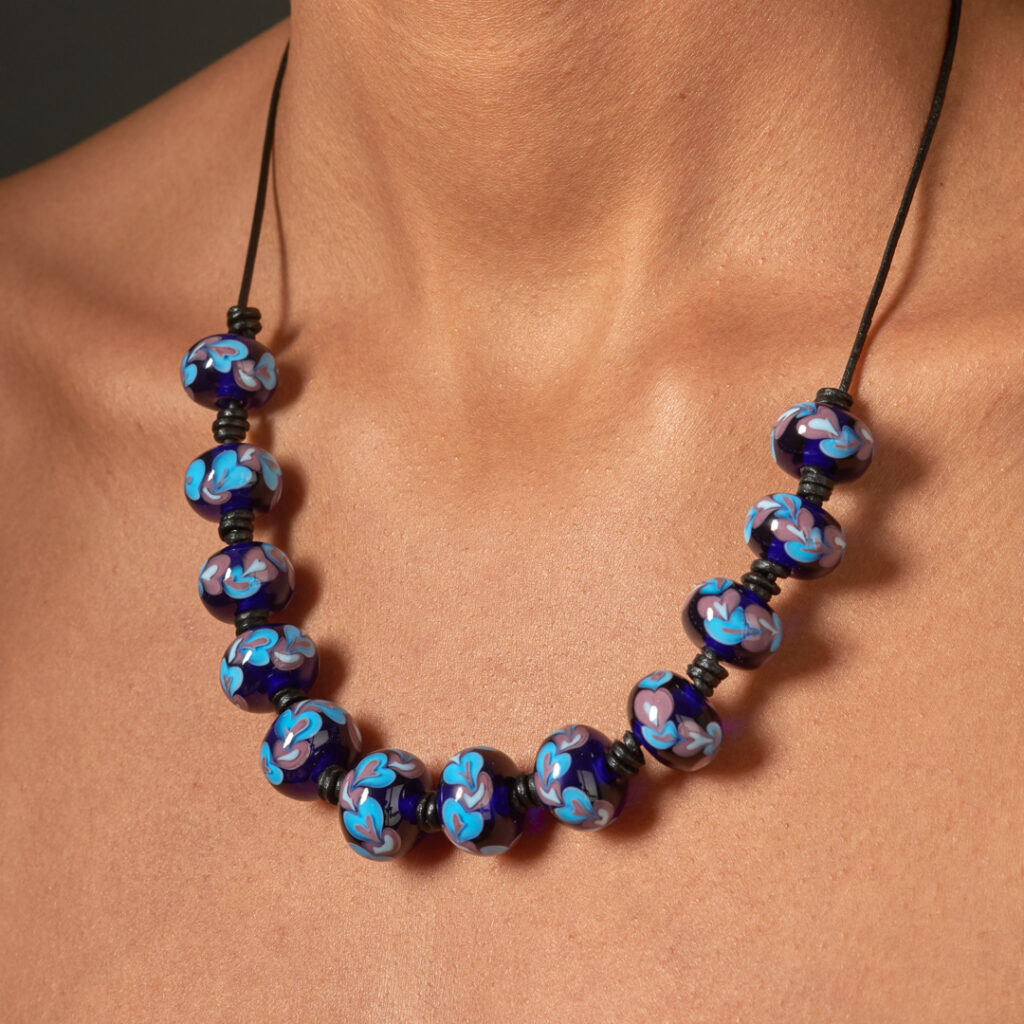
Raked
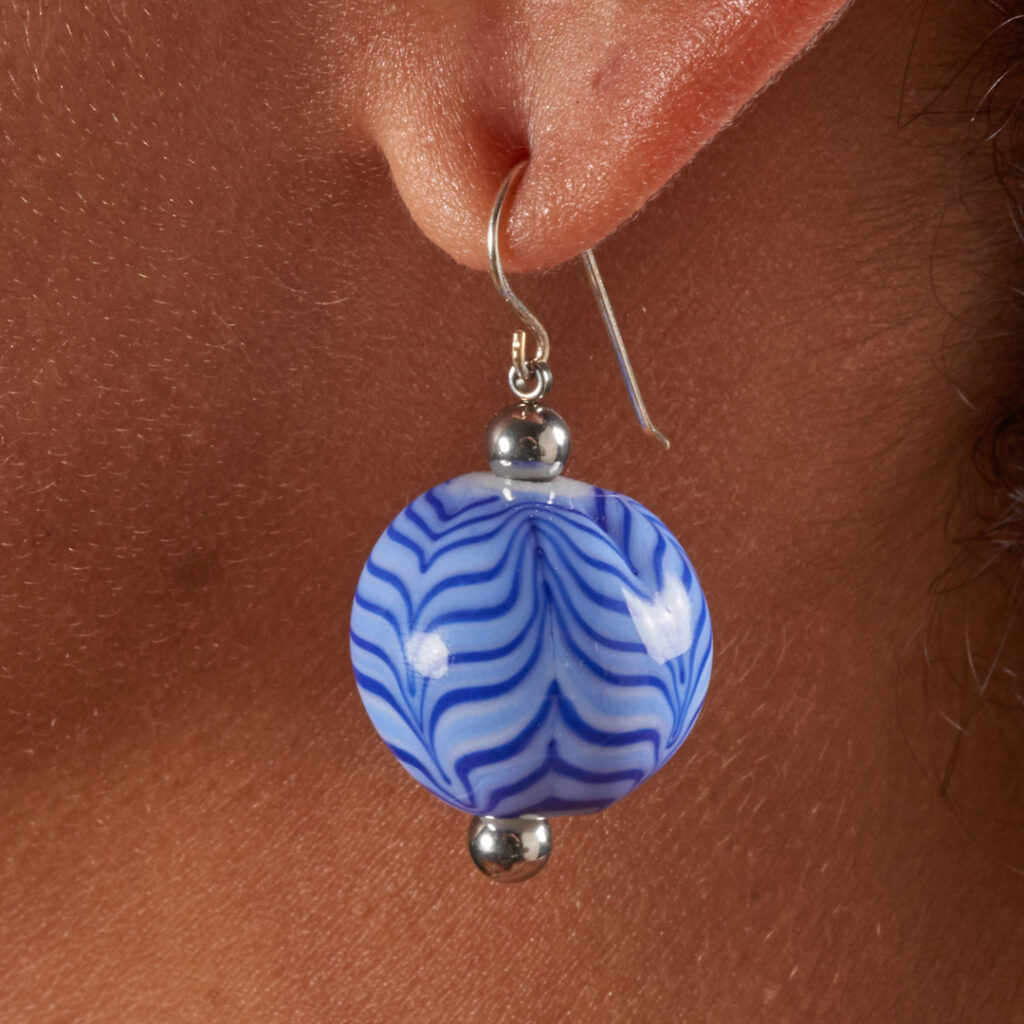
Dichroic & Ancient Dynastic
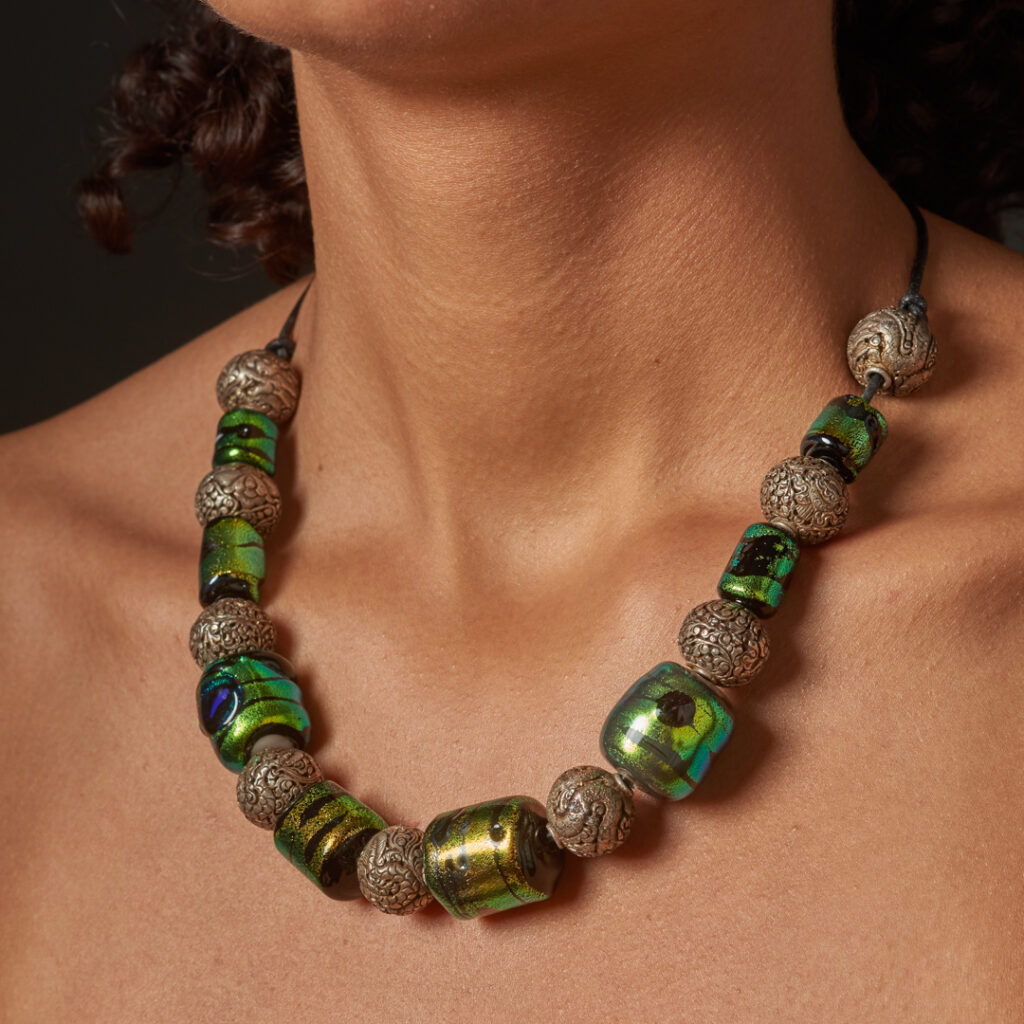
Marvelous Mixed Techniques
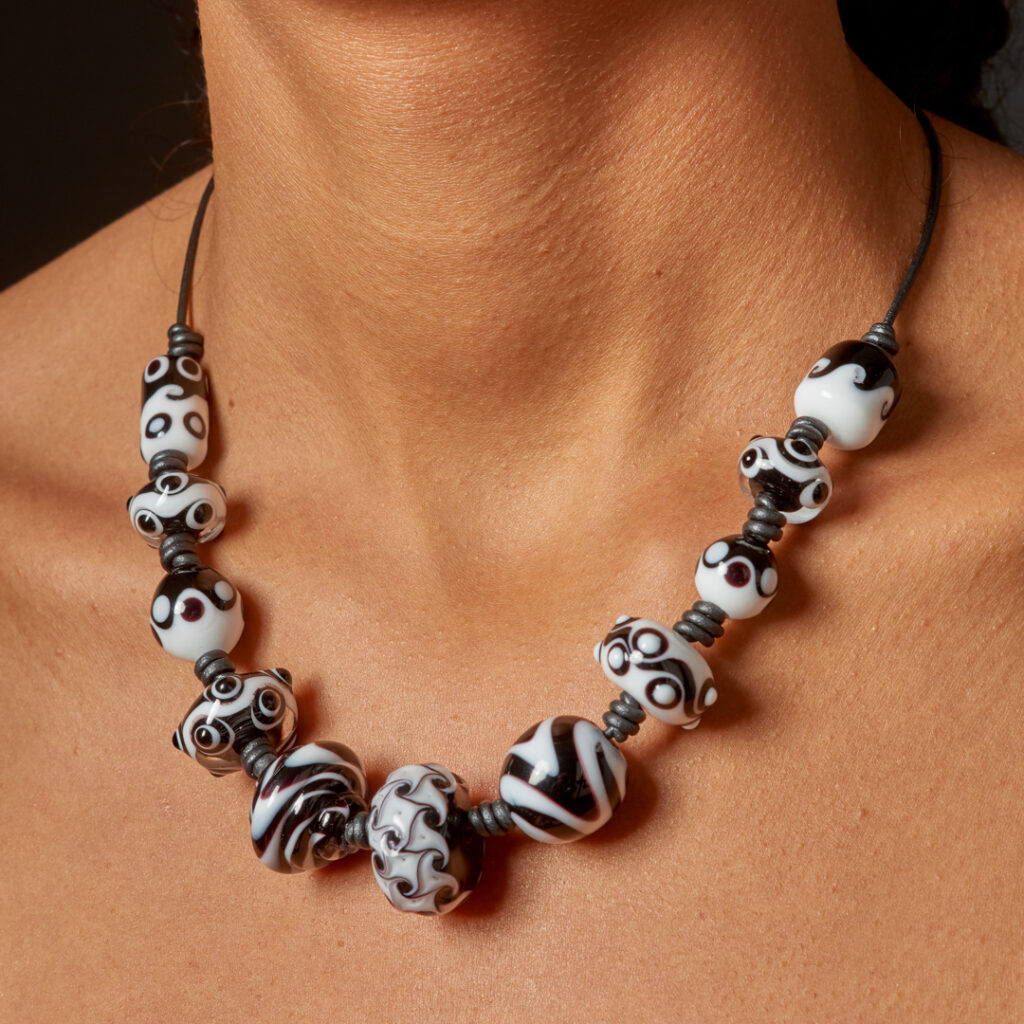
Monochromatic
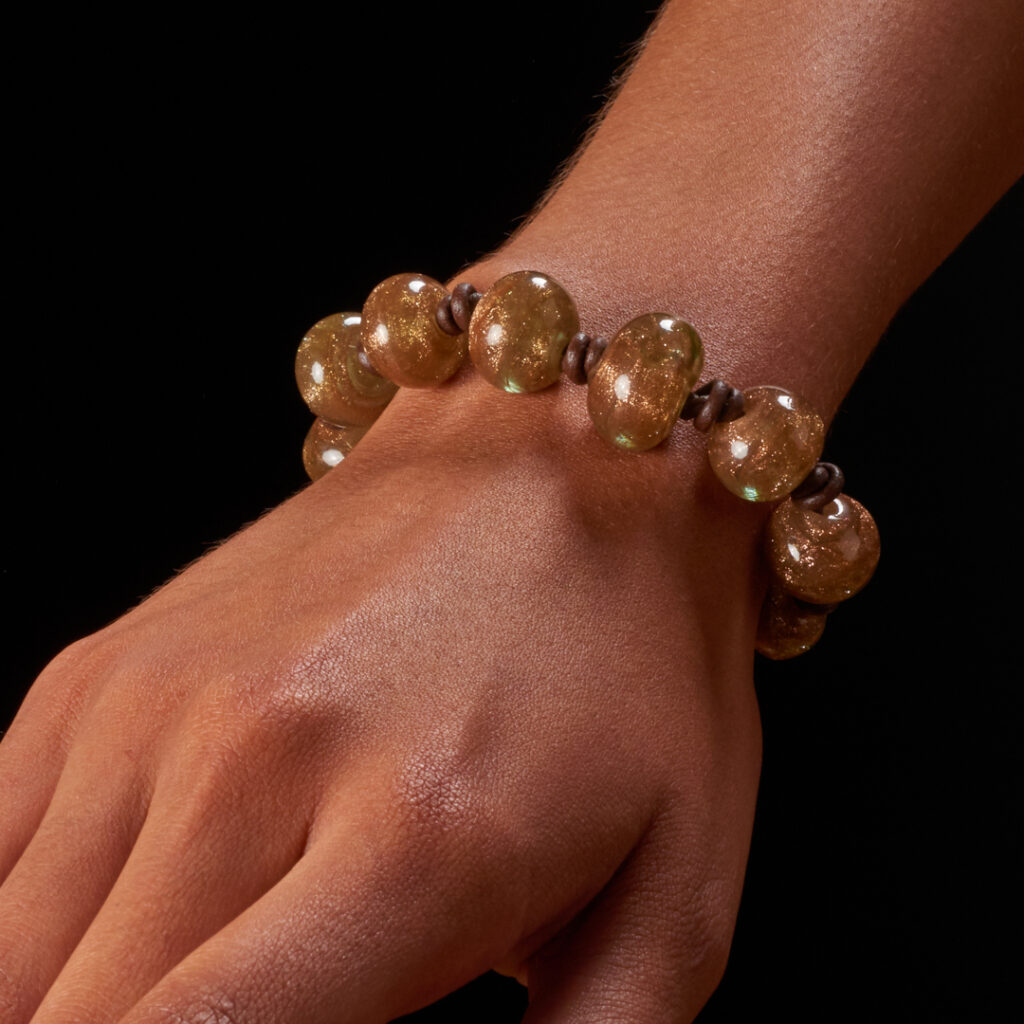
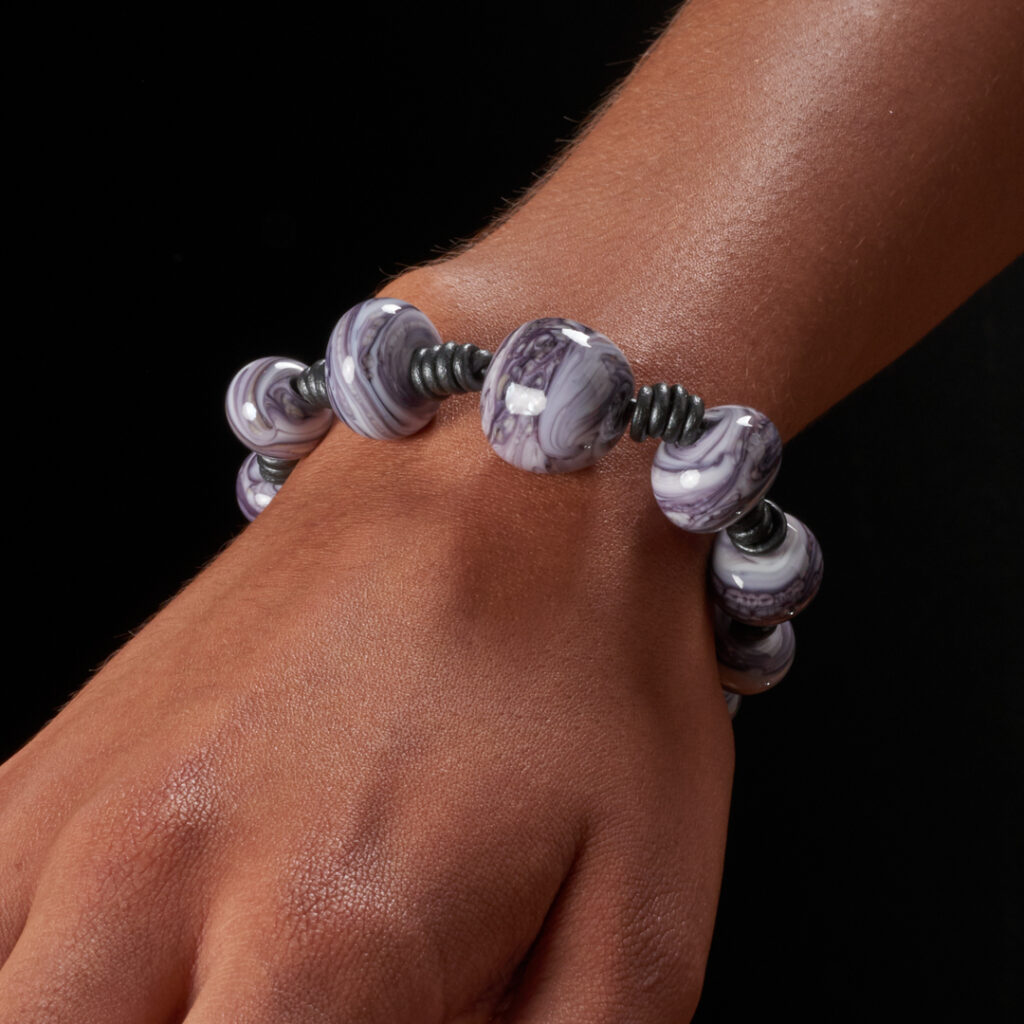
Combinations
Any base bead can be decorated in one or two of these styles. Only your imagination limits what you can do!
